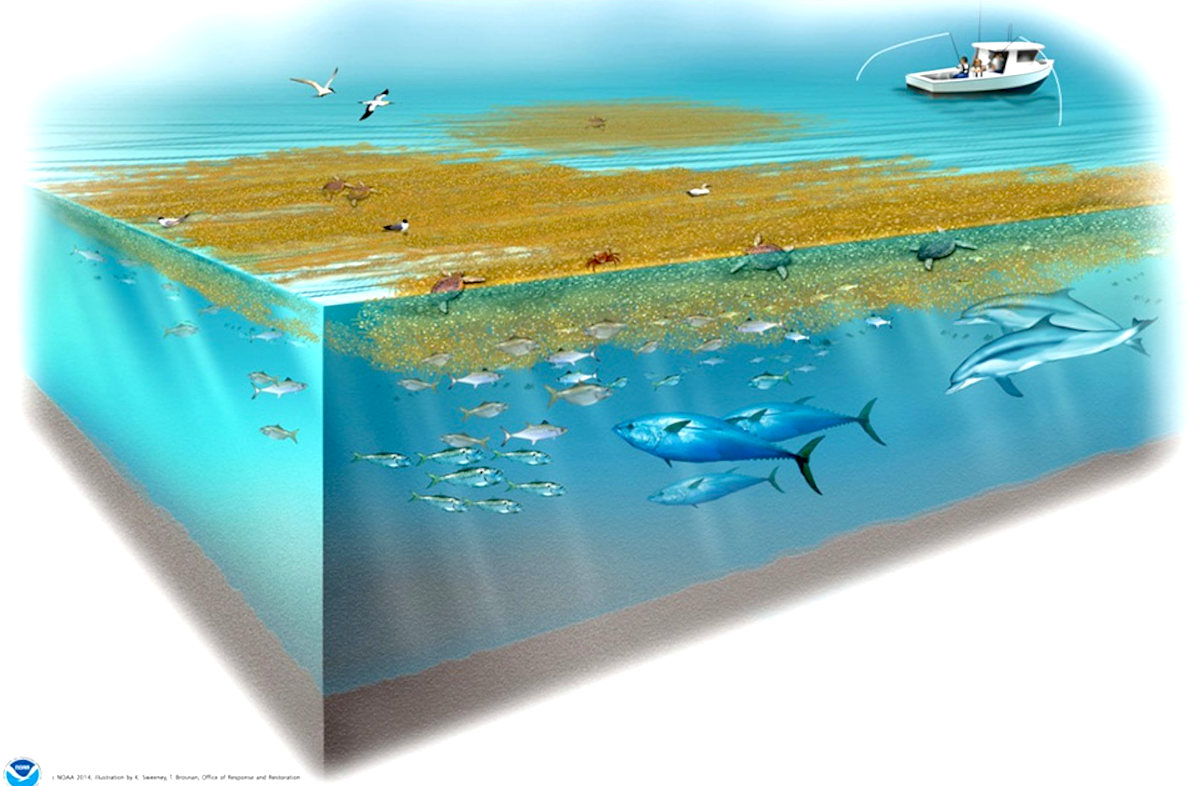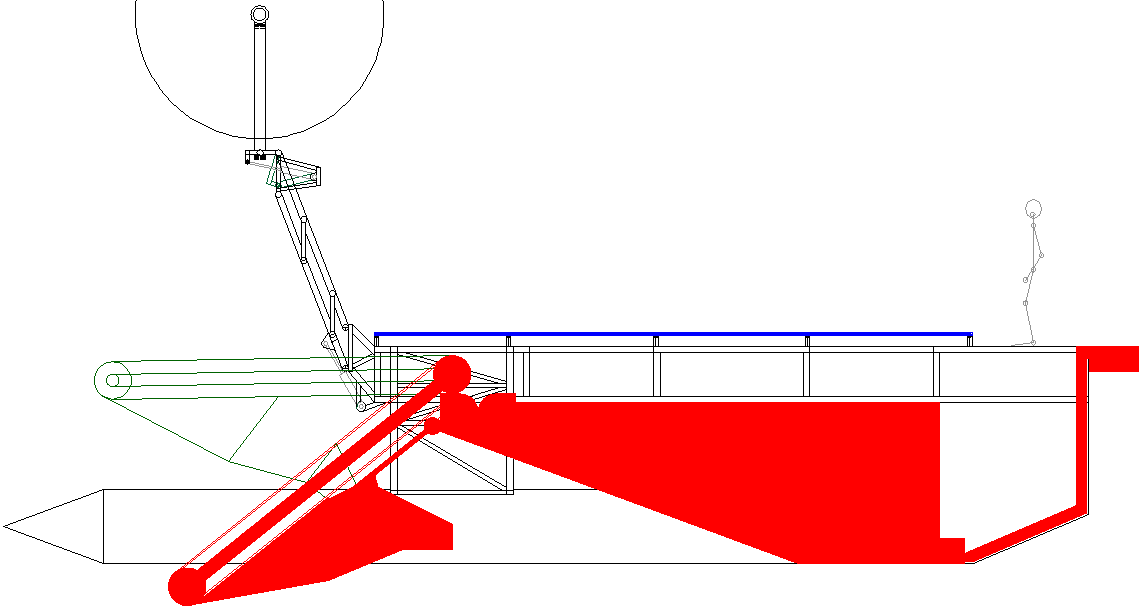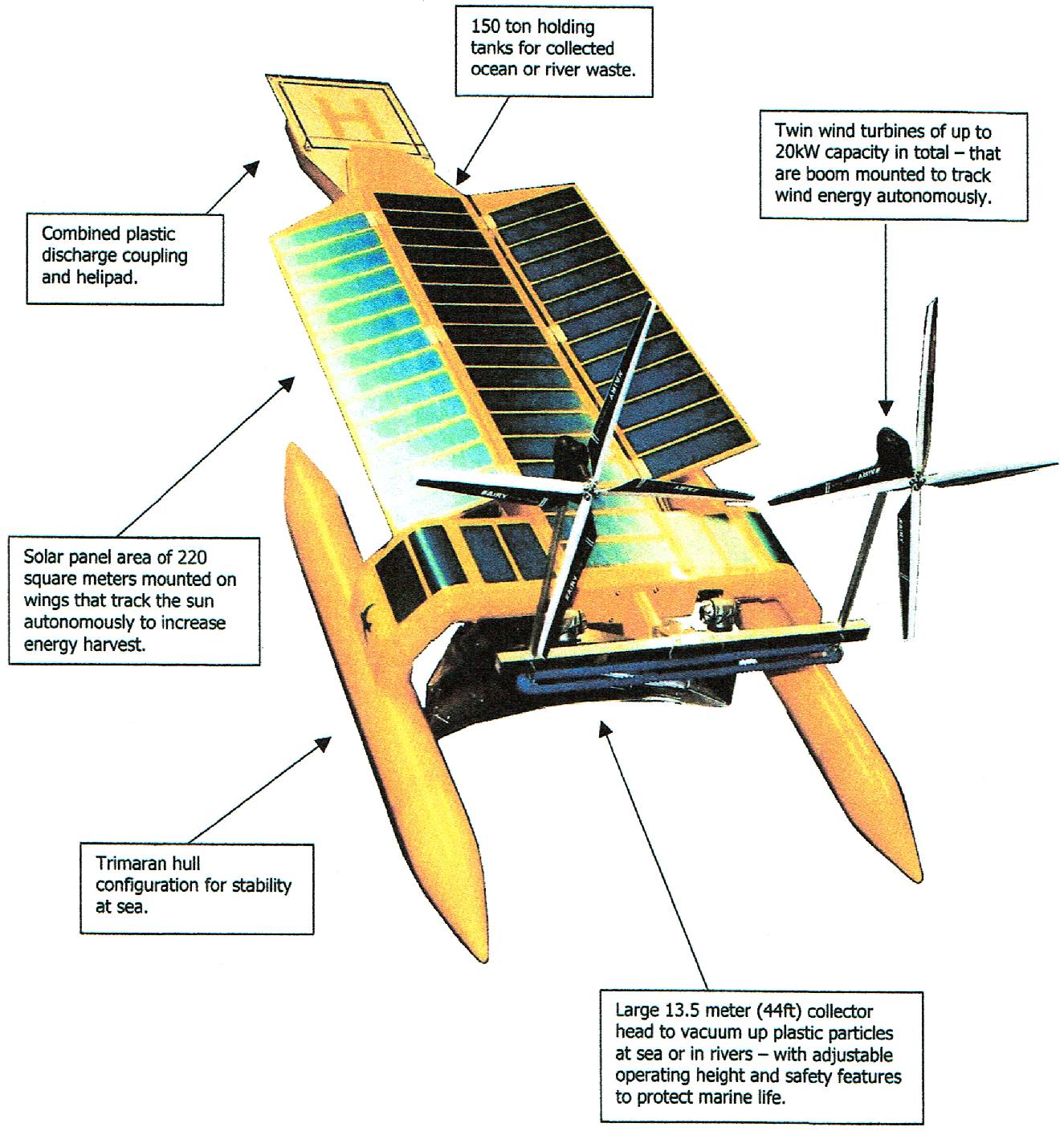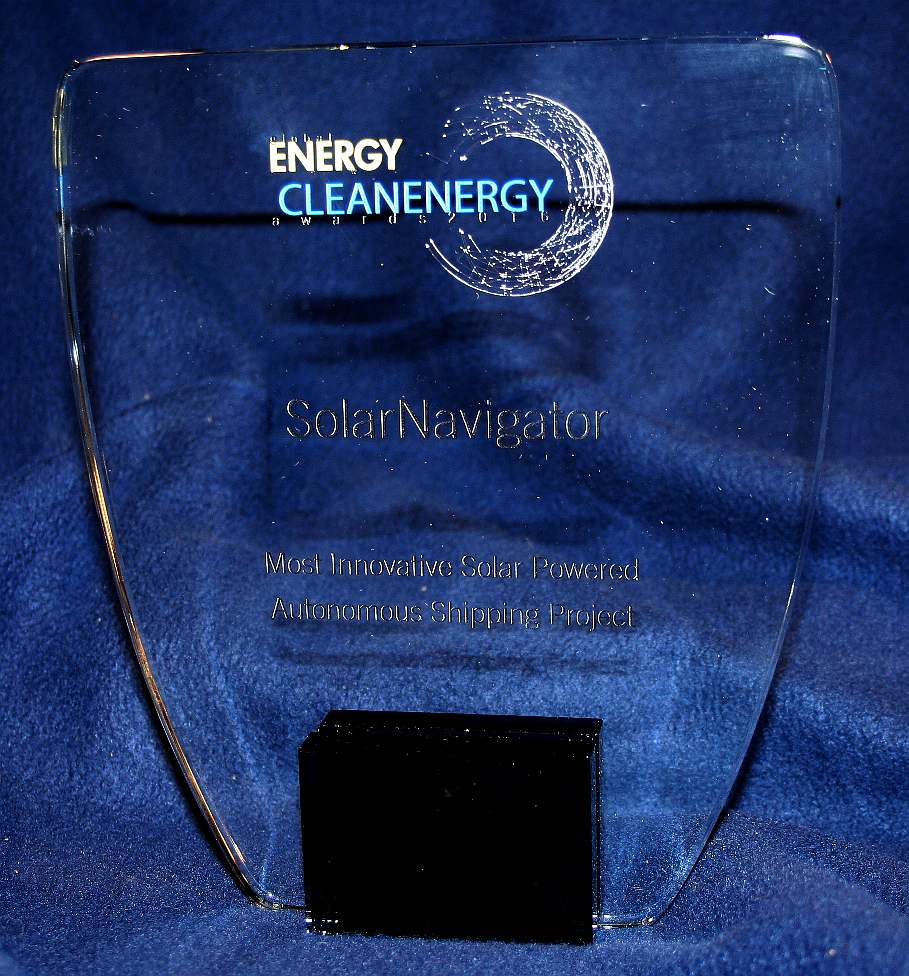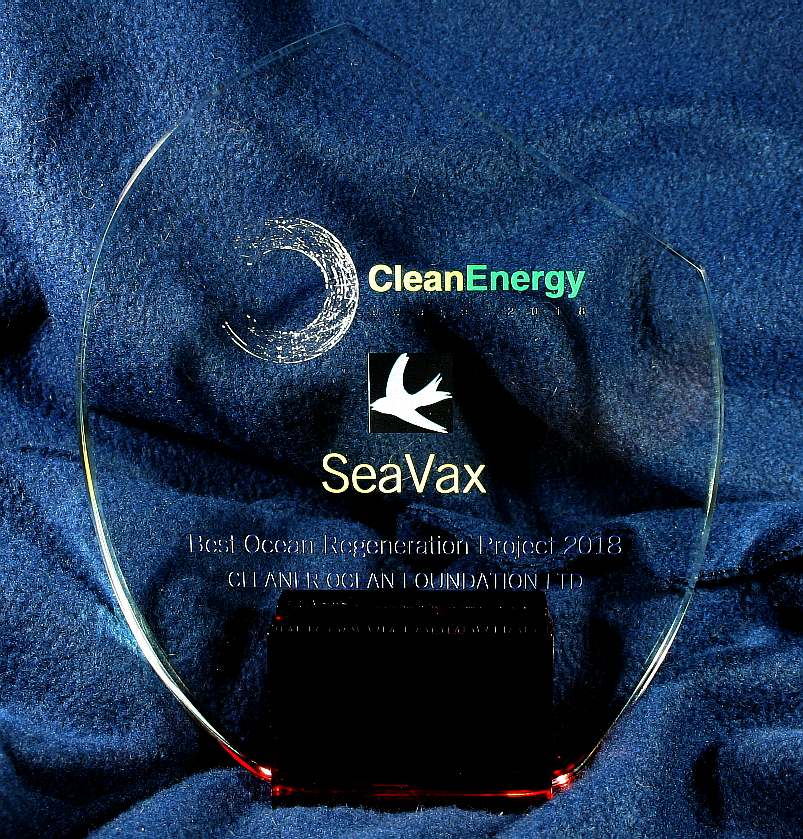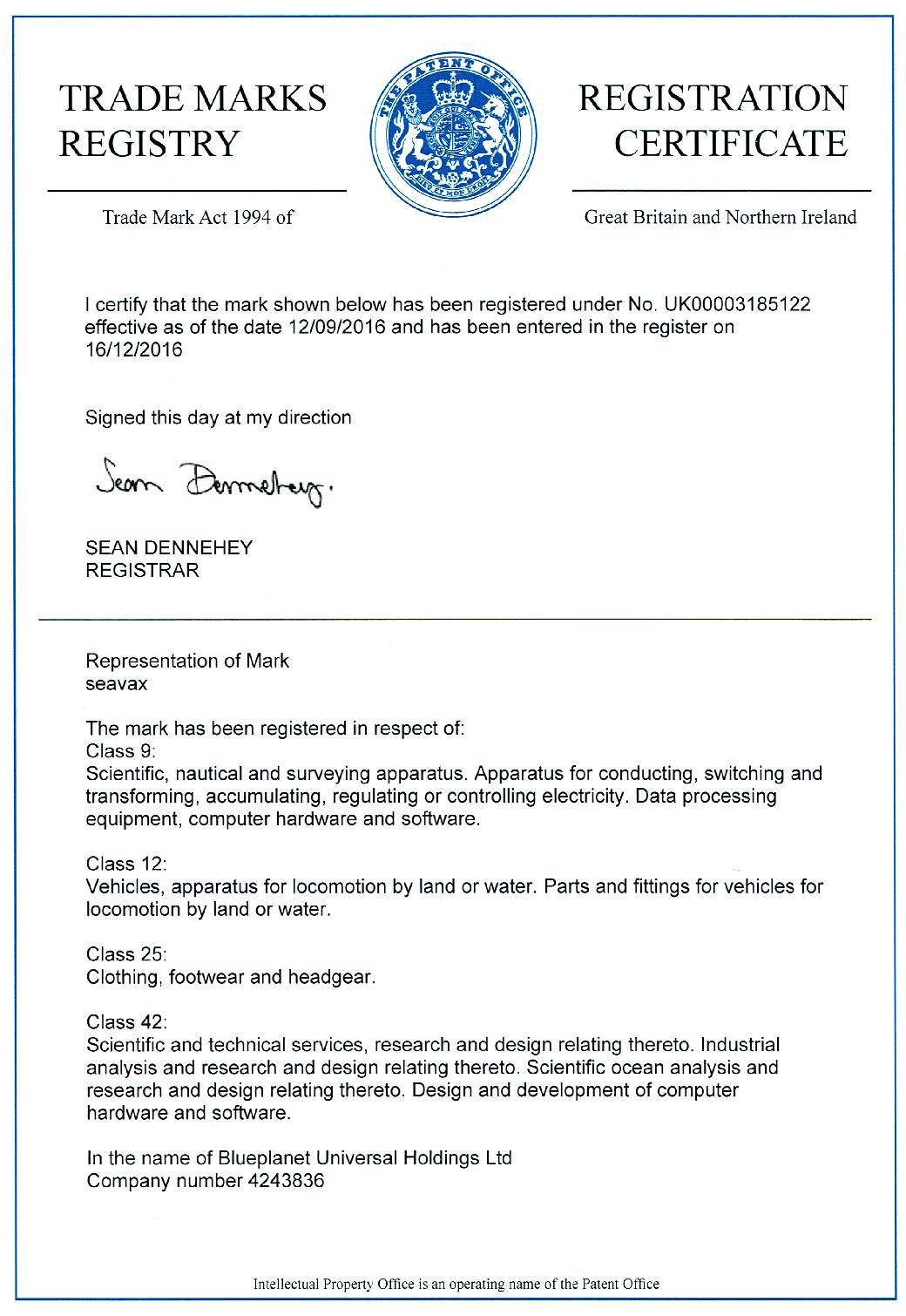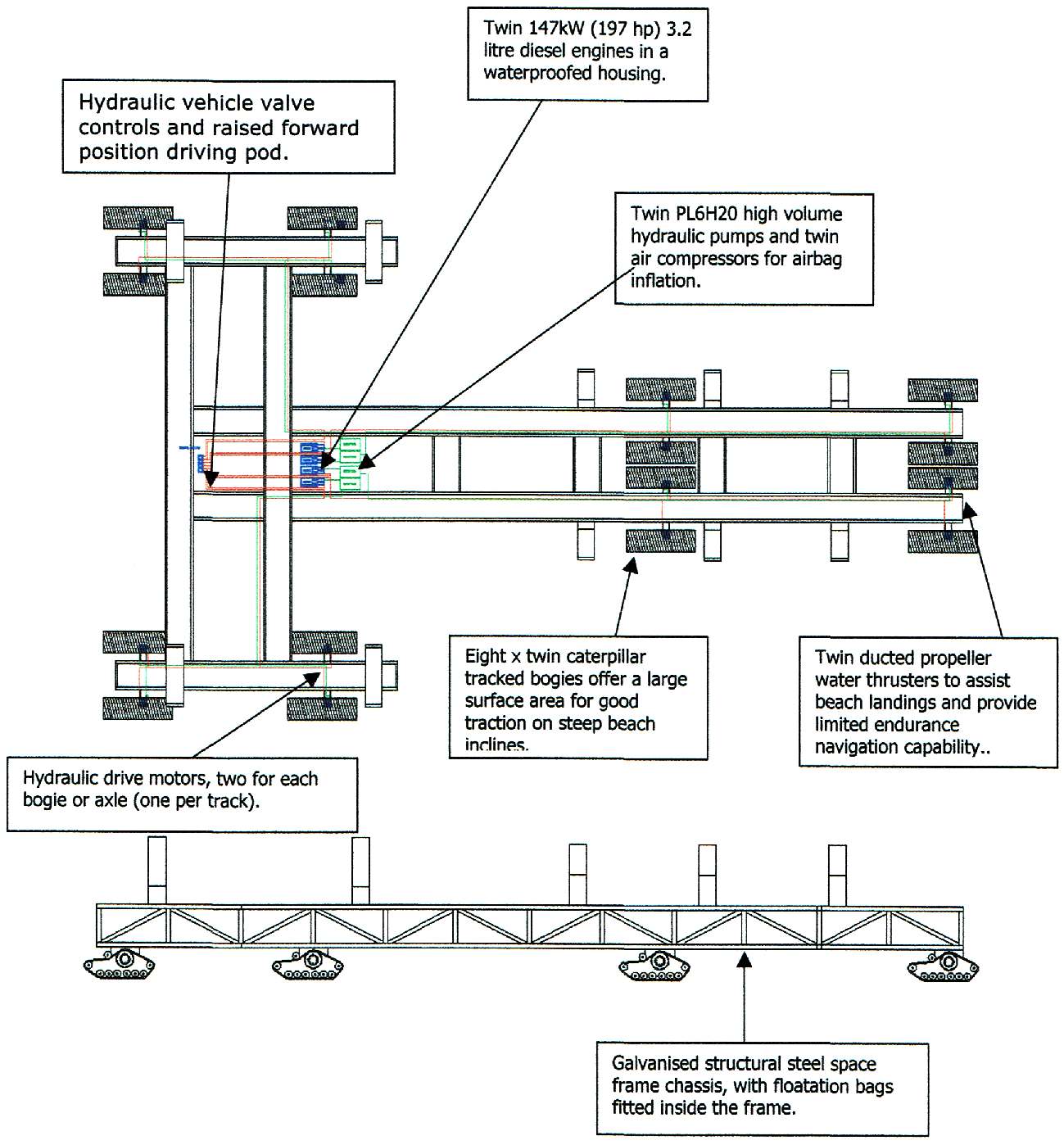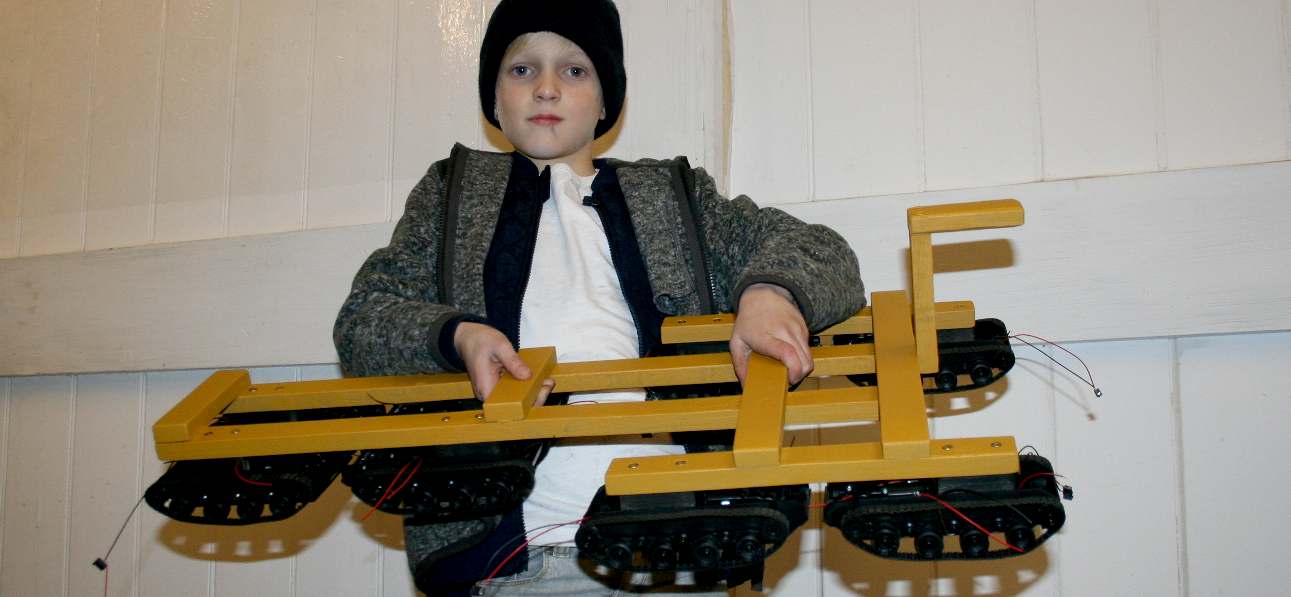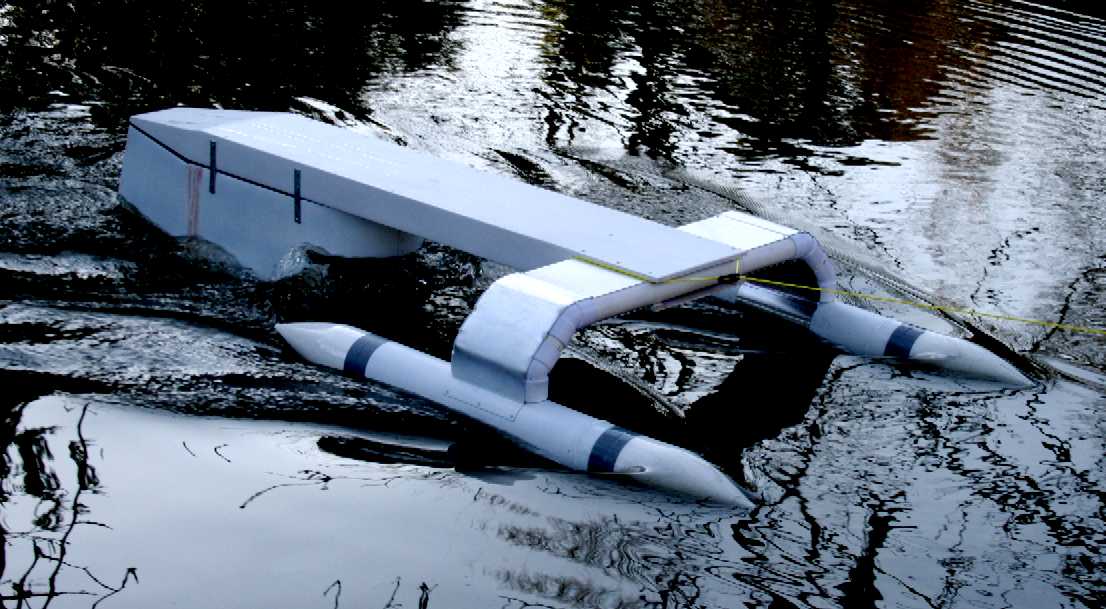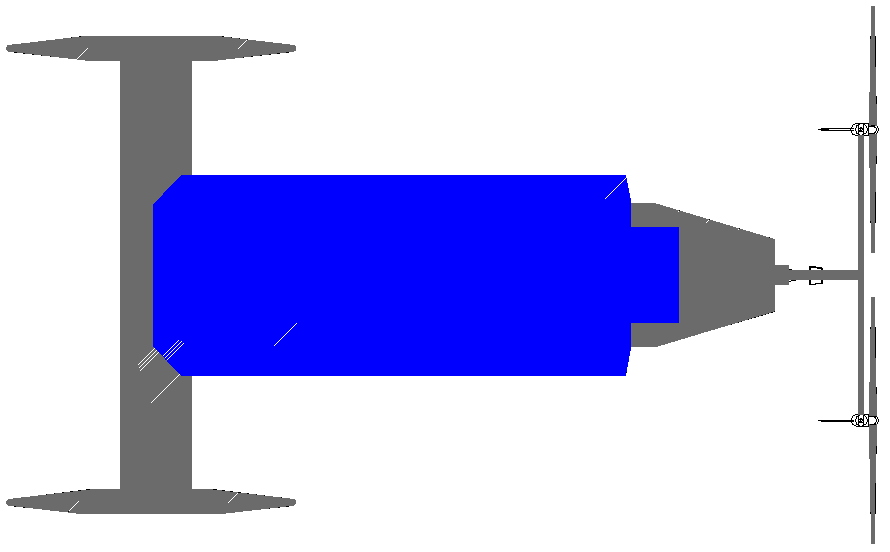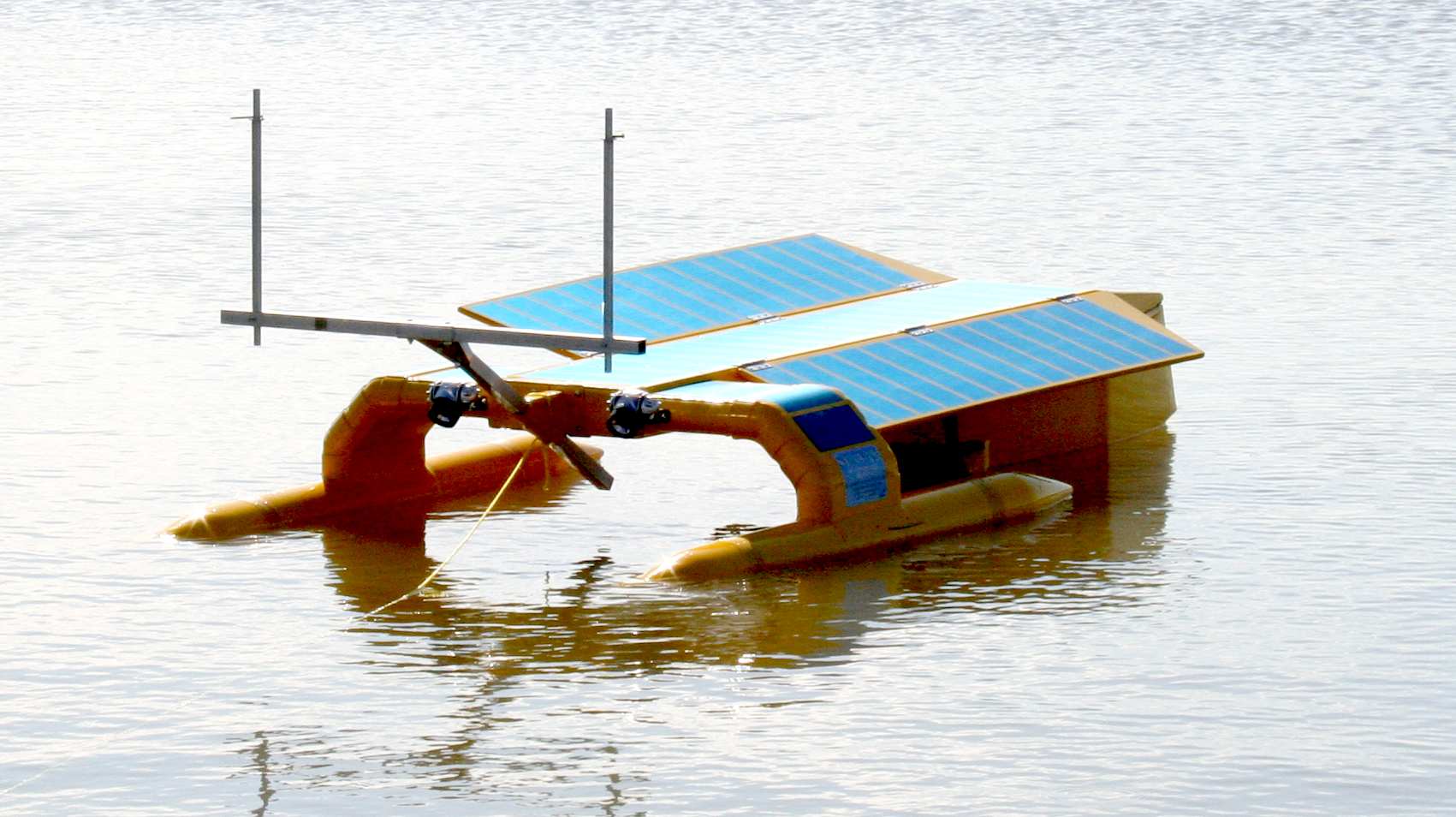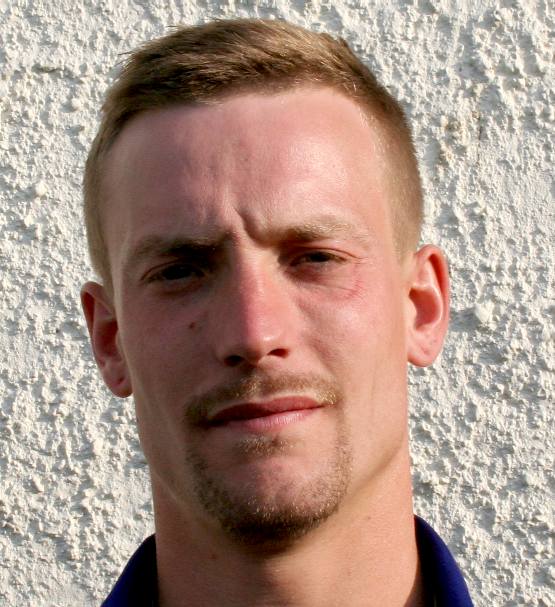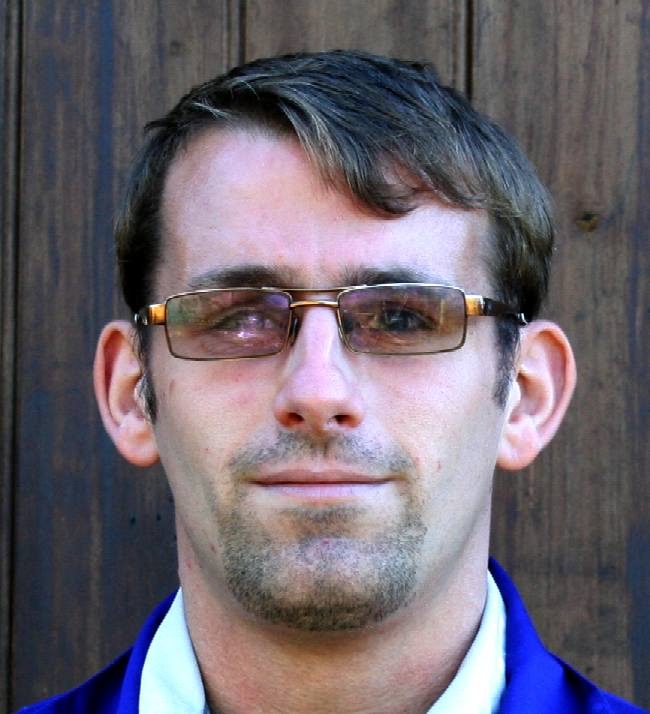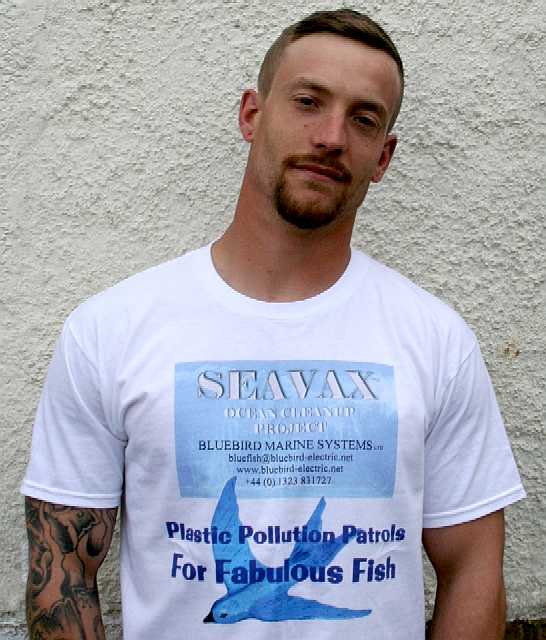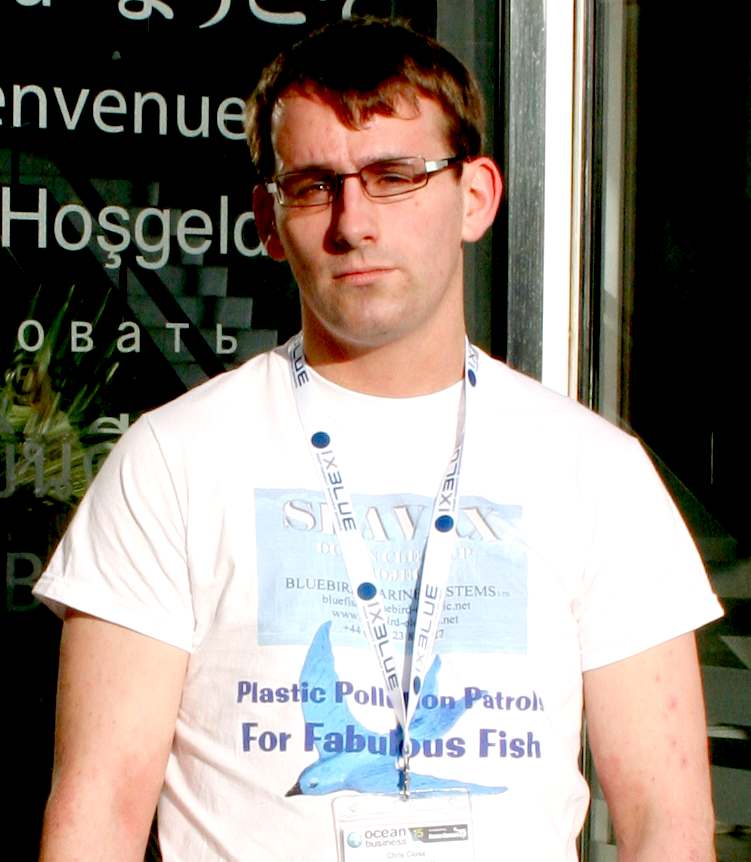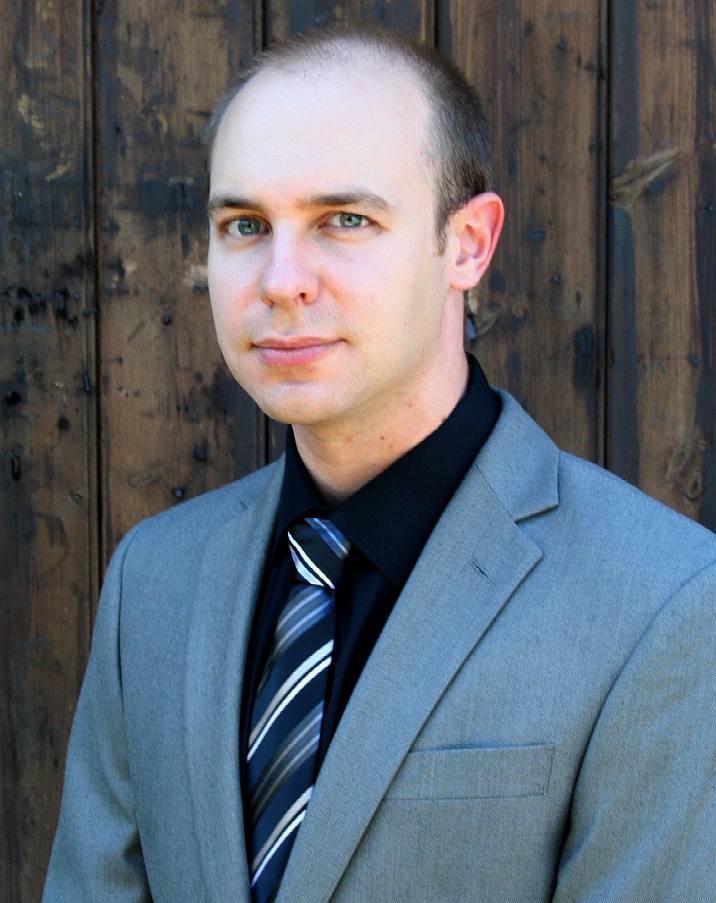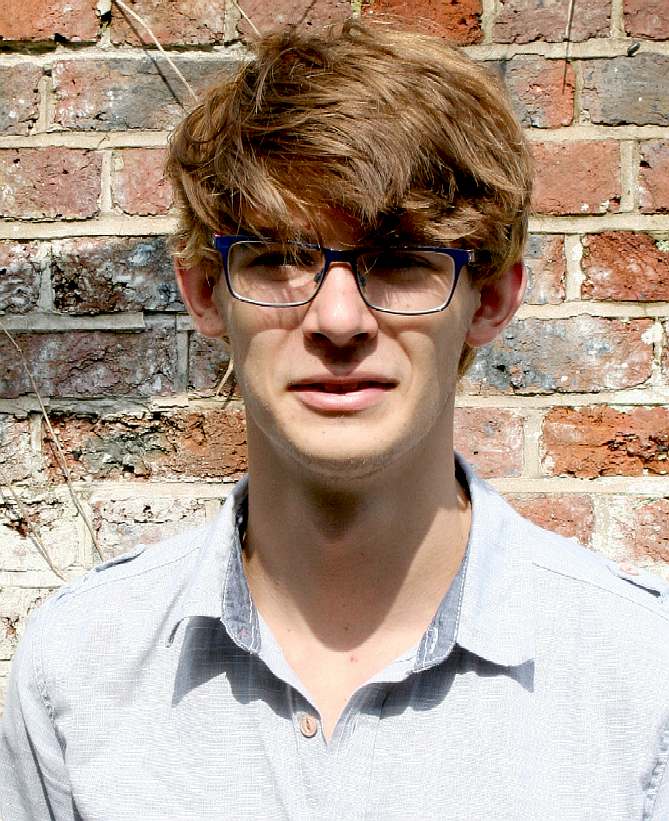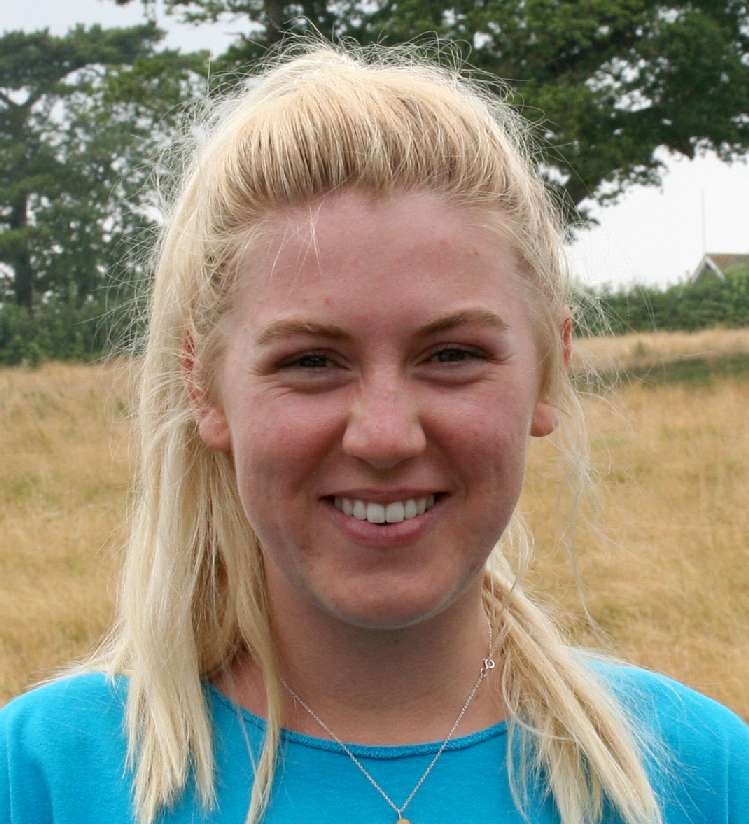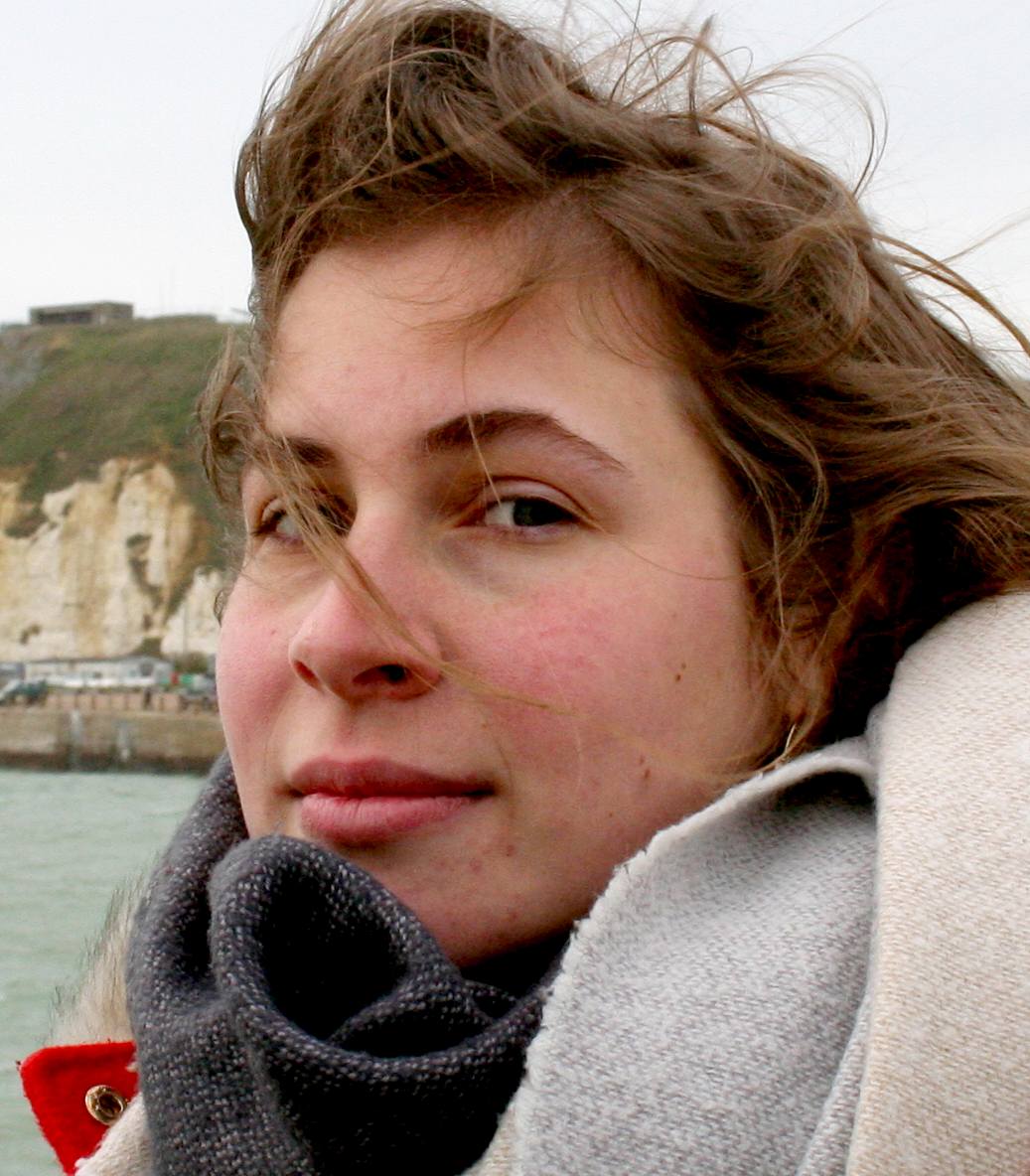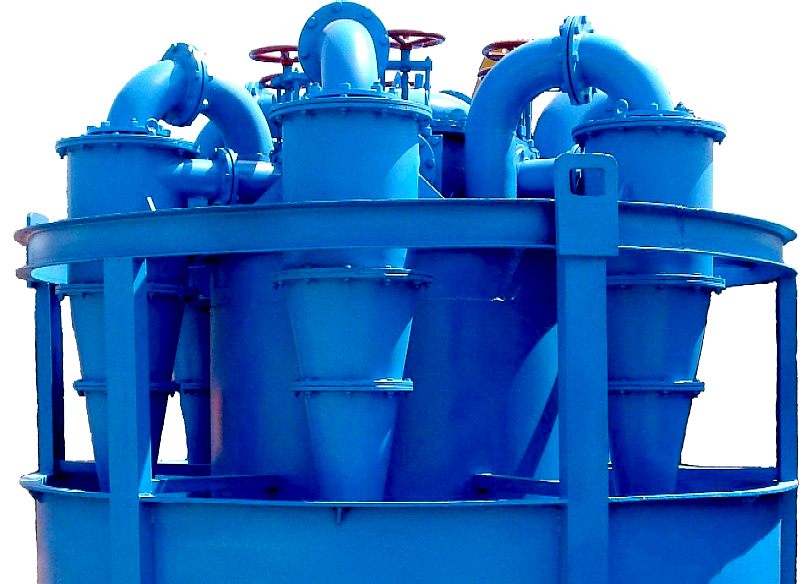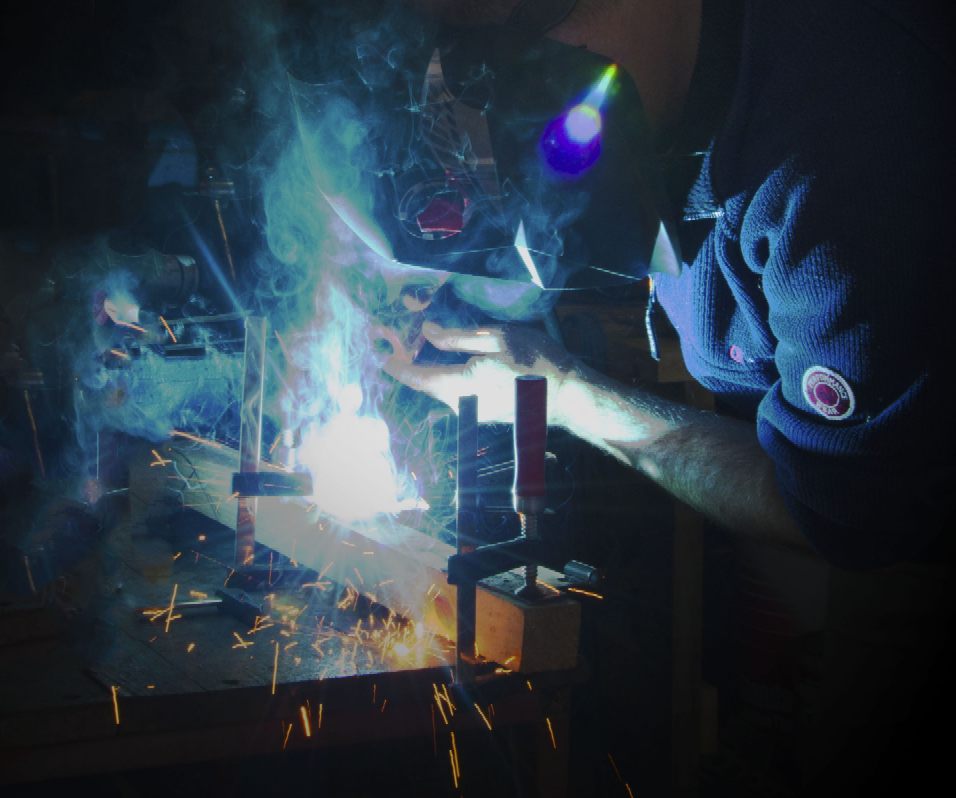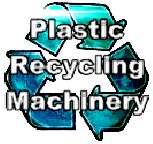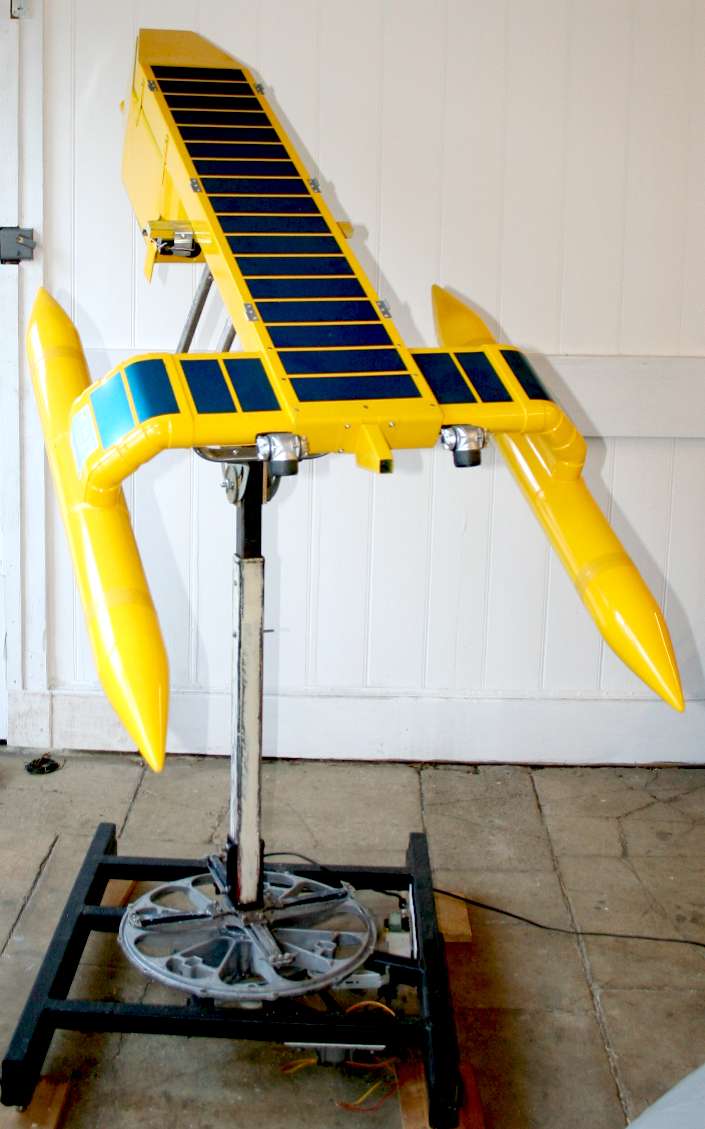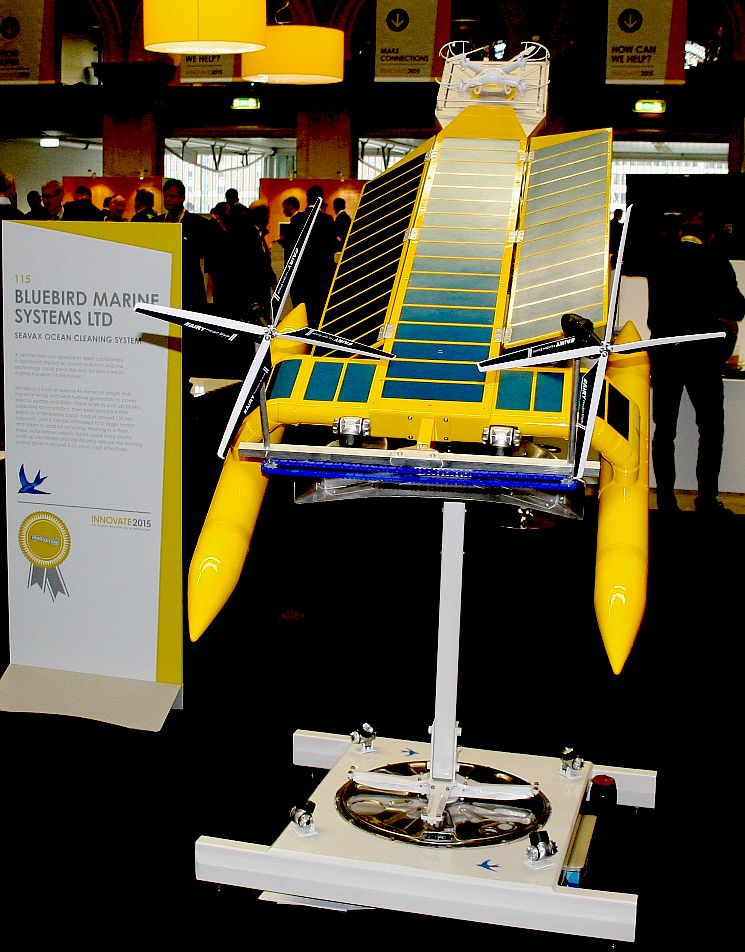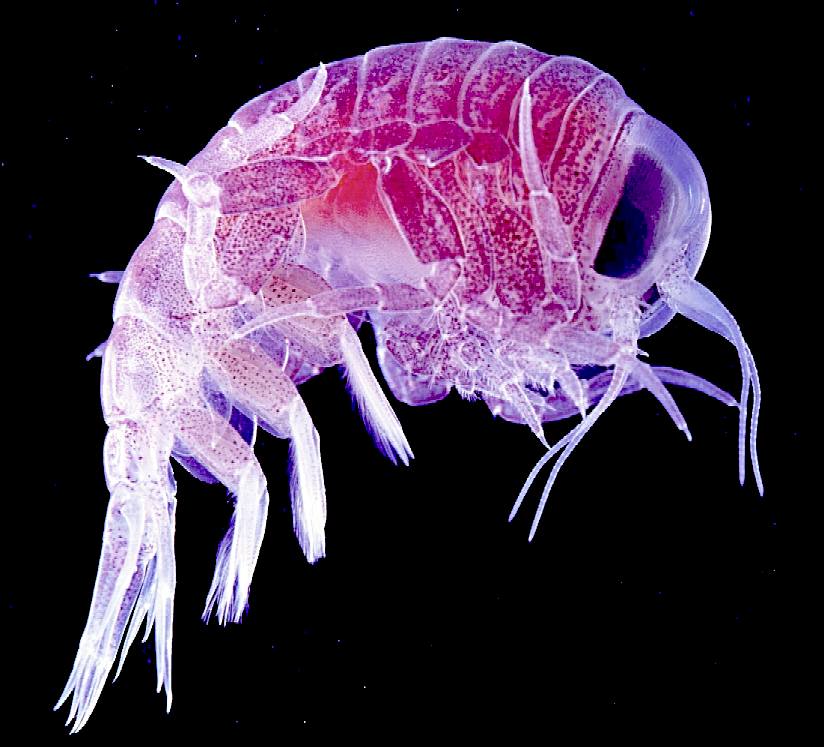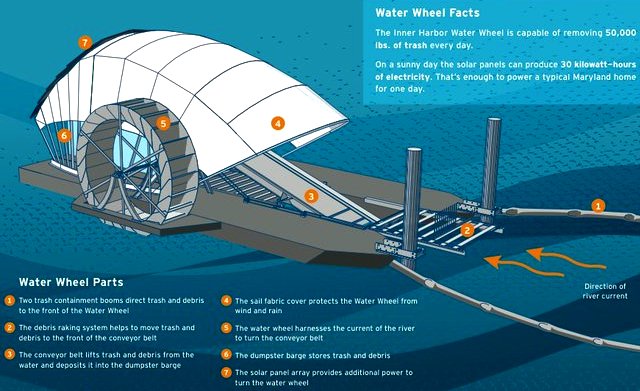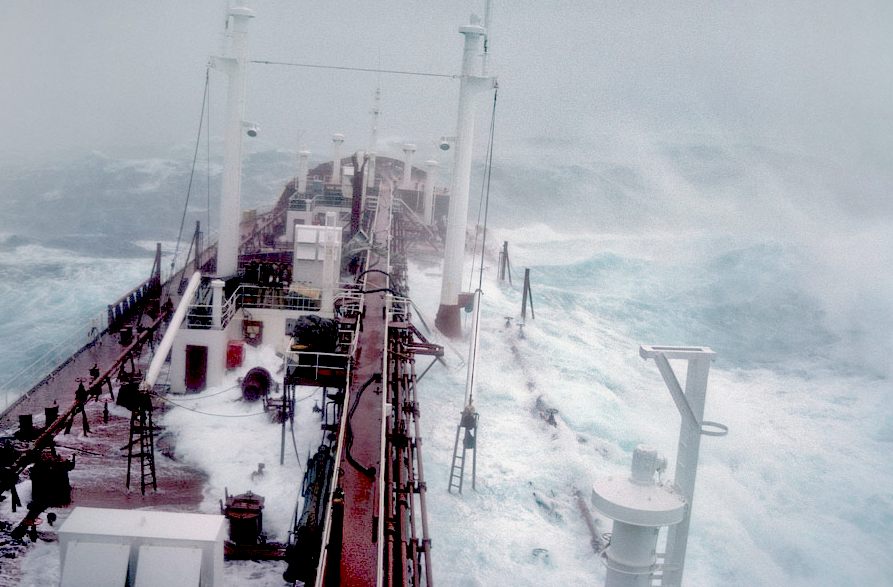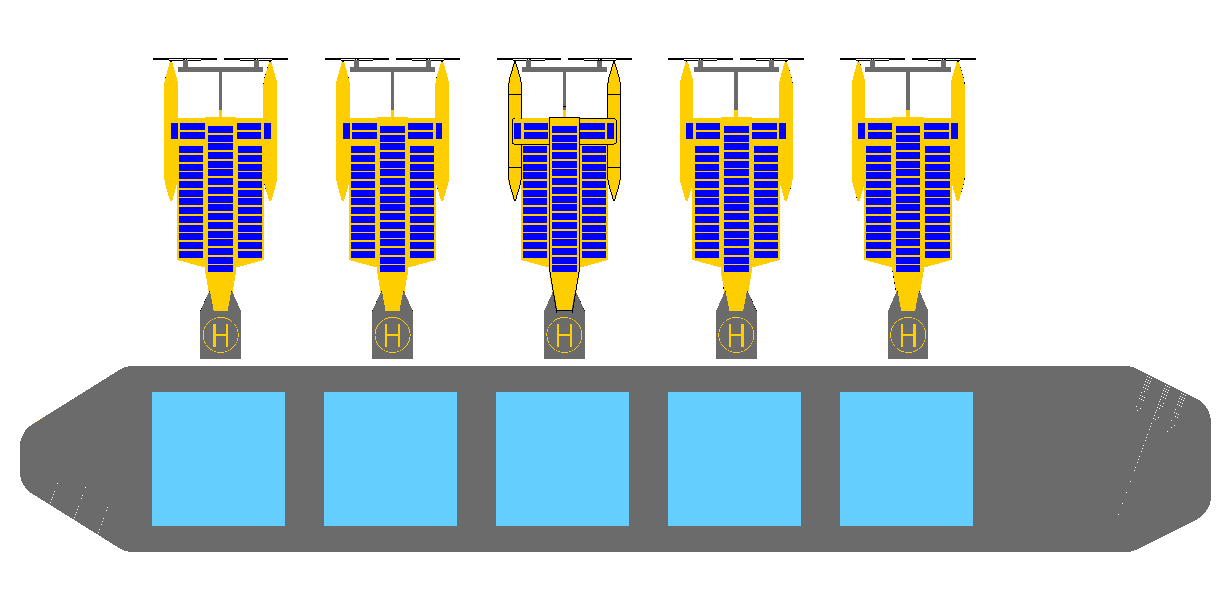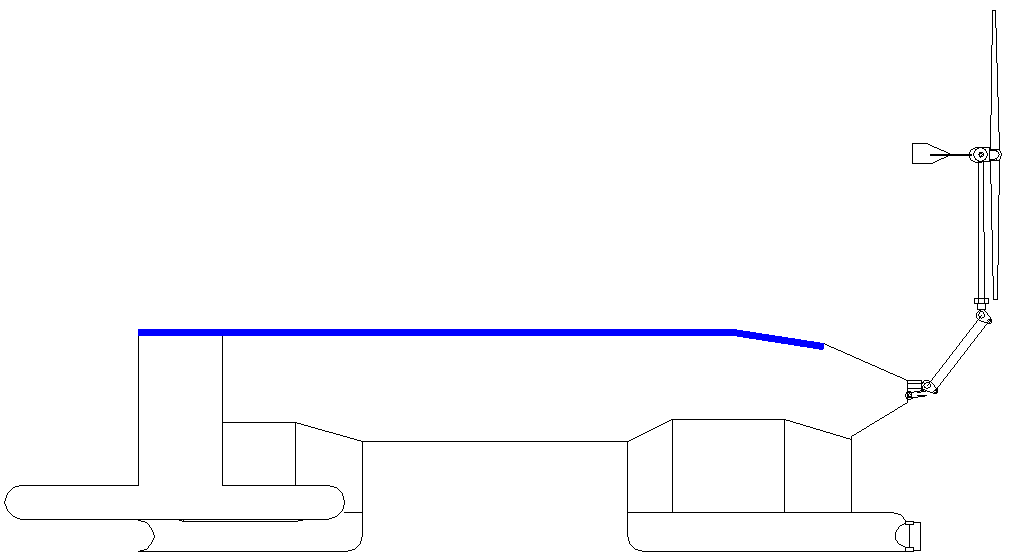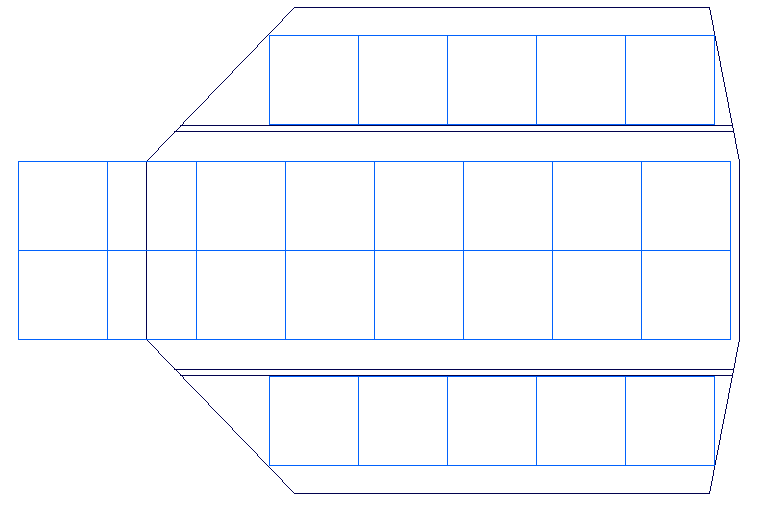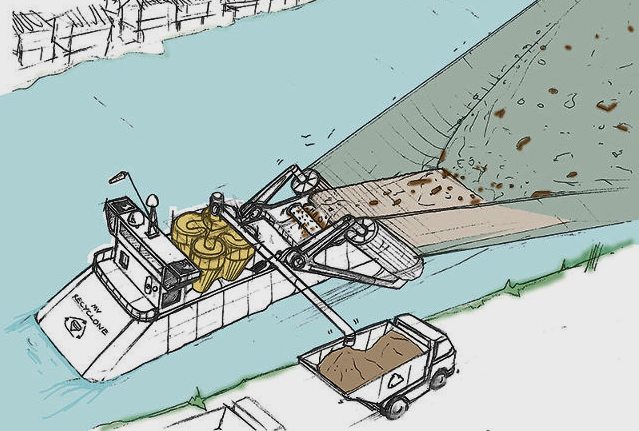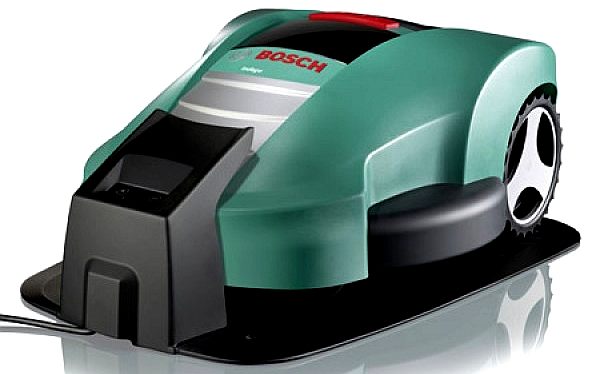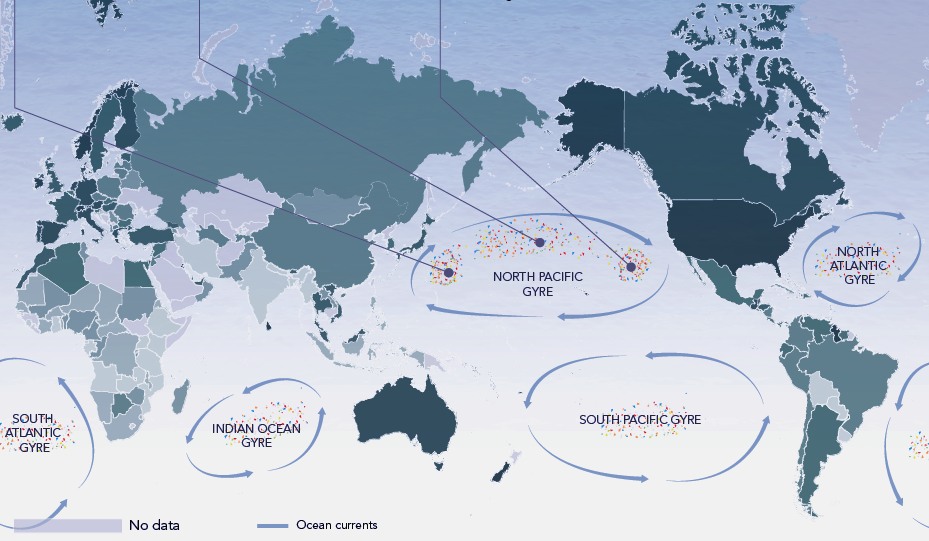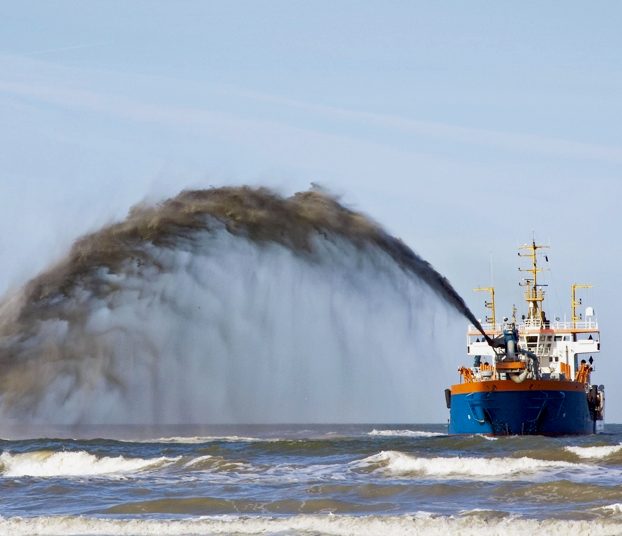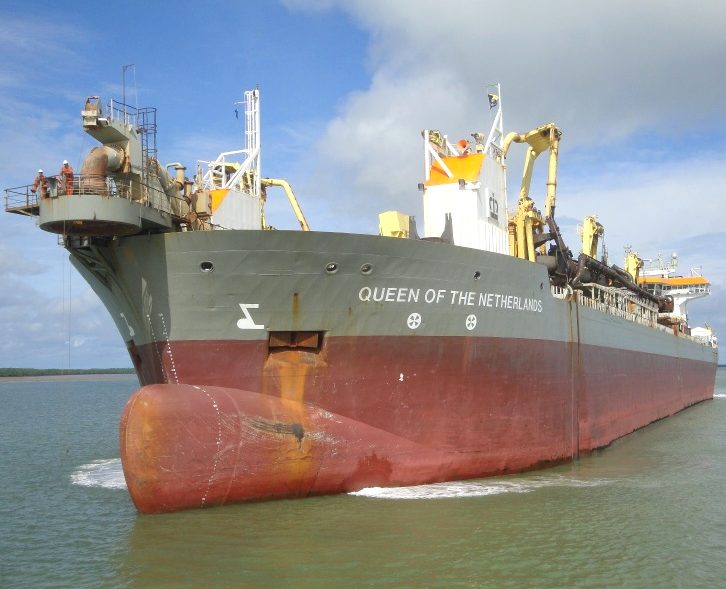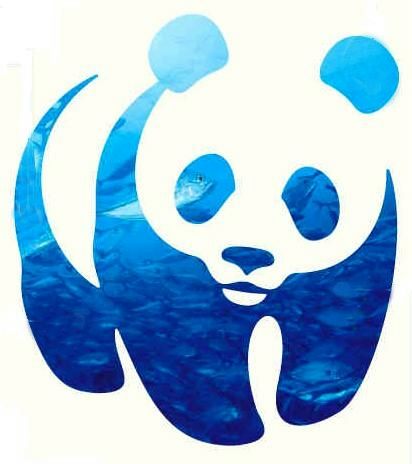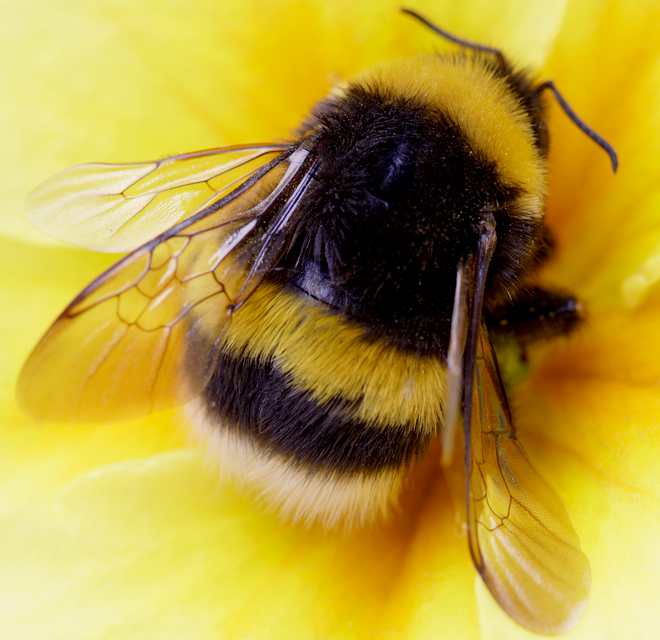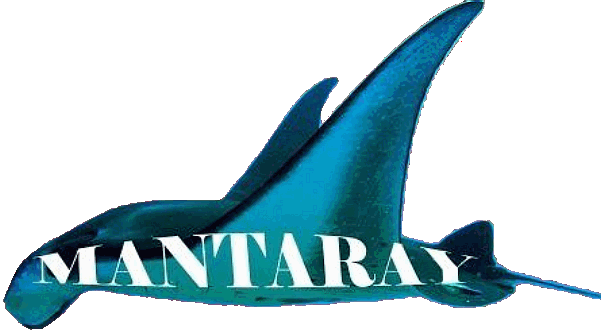|
SEAVAX™
- ROBOTIC VACUUM SHIP
|
|||||||||||||||||||||||||||||||||||||||||||||||||||||||||
|
SEAVAX = INNOVATION - In reality progress is a battle between innovators and regulators. Innovators provide solutions to problems. Regulators present problems to solutions. In the UK one of the most irksome regulators is the Royal Navy - mostly because they are in love with tradition and regulation books. Fear not, we are an international project, steering as far away as possible from such influences. There is as yet no rule book for ocean cleaning. We are writing a "fact" book for guidance, as we discover the best operational practices. In nature there are no rules, save for survival of the fittest. Innovation (evolution) relies on rule breakers. The picture above was of flotation and tow tank testing including solar panel deployment. Wind turbines were not needed for these trials.
SEAVax™ and SEANet™ - A POLLUTION SOLUTION
BIG PROBLEMS CALL FOR BIG SOLUTIONS - In 2015 Bluebird Marine Systems designed and built a proof of concept boat and exhibited it in London. In 2016 that company constructed their own test tank and robotics lab to further develop the craft. They also developed a method of making SeaVax economically, using a modular design almost anywhere in the world.
Bluebird Marine Systems became insolvent, passing the challenge to the Cleaner Ocean Foundation to avoid bankruptcy. They had taken the project as far as they could as a not for profit Small to Medium Enterprise (SME) where match funding requirements to forward funding were seen as a real blocker.
COF is a charity, not an SME. It was hoped that would open more doors for them as United Nations Sustainability Development Goal (SDG) 14 kicks in. Funding shortfall stalled this urgently needed ocean research, where 4 years of lobbying revealed a lack of political will.
SeaVax (proof of concept model) is now a permanent exhibit at Herstmonceux Museum in Sussex. Where a whole unit has been devoted to ocean plastic, as testimony to man's senselessness.
Where the leaders of the human race appear intent on poisoning their citizens, for a profit motive. As truckloads of plastic that clean nations export for processing, are actually dumped into rivers untreated by the importers, thence into the sea. Apart from being a breach of trust, and/or contract, we think that is criminally insane!
Plastic waste should be treated in the country of origin, with exports and river dumping, both being an international criminal offence. Prosecutable even in territorial waters by Interpol investigators, in the International Criminal Court. All the way up to the officials who are failing to prosecute nationally.
The concept could have been developed to deal with the sargassum emergency. Examples of which are:
BACKGROUND
Between the 13th and 31st of March of 2016, 50,476 people donated to a brief campaign run by Avaaz, to help us get SeaVax from Phase I into Phase II of the project. This drive gave us a whopping boost to our coffers to, in effect, kick start what will be the build of the development prototype. We cannot thank all of those who contributed enough, and Avaaz, for taking the initiative once their members had identified ocean waste as a major international issue and a blocker to blue growth agendas around the world.
BMS suffered a net loss during 2016-2017, forcing them to pass the SeaVax project on to the Cleaner Ocean Foundation, though continuing to provide support. Without the political will (social funding), all the solutions in the world will never see the light of day. So long as the sea remains a free dumping ground for single use plastic and ghost fishing gear, oil lobbyists will sway policies to allow them to continue with their free lunch; at the expense of marine life. Laws are needed to give a sufficiently high monetary value to genuinely harvested ocean plastic. Redeemable at ports of landing. To take the development out of a loss making philanthropic gesture, into the real of a commercial possibility.
Don't hold your breath. The G7-20 will not jump until cancer and/or infertility or miscarriages are linked to carcinogenic seafood. Or, until seafood catches are so low, that starving people are forced to desperate measures. And even then, don't hold your breath. Politicians have been aware of the link between diesel particulates and lung cancer for years. But still bans in cities, or other areas of population concentrations are not in place. They are trading human suffering for treasury income, knowing their citizens are dying in the millions.
It's a bit like the Government Health Warning on cigarette packets. Except, that there is no warning about lung cancer when you buy a diesel or petrol vehicle. And all HGV trucks run on diesel. And that is the real problem. Our trucks should have been running on green methanol ten years ago. Who then do we blame. The truck makers, or the politicians who failed to provide healthy leadership?
The Cleaner Ocean Foundation needed to raise significant additional funds to see them through 2018 into 2019 but a Horizon 2020 application was refused by the European Commission - a great shame in the quest for food security. Further European applications in 2020 were also refused. The project was very reluctantly shelved, as the assembled dream-team of volunteers engineers and academics could no longer afford to ignore mounting mortgage arrears, shutting the doors on a promising solution to many ocean spills and ecological conundrums in 2020.
Now heading into 2024, the marine litter problem is far worse, with no alternative (viable) solution in place.
THE SARGASSUM CRISIS - As climate change warms the oceans, sargassum is likely to become more of a problem, without a solution at present. A modified version of the SeaVax, could be adapted to harvest the macro-algae in a giant cleanup operation, aimed at preventing the large brown floating seaweed from becoming a tourism disaster in the Gulf of Mexico and Caribbean islands, by heading it off at the pass.
Unfortunately, the Cleaner Ocean Foundation was forced to pull the plug on the ocean cleaning project, it appears because funding application assessors, failed to grasp the potential of the concept to be applied to other ocean cleaning duties, including oil spills. And, calls for proposals are largely already earmarked for safe bets. In 2020 the dream team comprised of 10 academic concerns and 5 volunteer technology champions, reluctantly disbanded. In order to begin again, the costs would be around ten-twenty times that when operating on a not for profit basis. Not only that, but the next bunch picking up the gauntlet, would need a solid contract, not promises and mounting mortgage arrears. Not to mention, vision by the bucket load.
ONGOING DEVELOPMENT - Using a single large rotary sail is more effective than two smaller turbines on a single boom. We might incorporate two turbines for higher latitudes, one at each end of the vehicle, without upsetting the airflow as much as with two turbines in close proximity. Raising the turbines as high as possible also improves capture. There are though practical engineering limitations as to mass aloft. The power to weight ratio of solar and wind generating equipment is a delicate balancing act by way of a compromise. Where most cleanup operations will be while at anchor, this is not so much of a problem.
H2020-CC-FNR-09 CALL FOR PROPOSALS OPENED OCTOBER 15 2019, CLOSES JAN 22 2020
The Cleaner Ocean Foundation is part of a consortium formed in 2019 that is applying for funding under the above call. The confirmed funding rates are: 70% SME - 100% not for profit organizations, and Brexit will not affect EU contributions to Horizon projects. In this case the suggested budget is €6m Euros.
In 2018 we suggested that the world probably needs something like a: WORLD OCEAN ANTI-PLASTIC ALLIANCE (WOAA), if we are really going to see a global collaborative social project like this get into a R&D top gear. We reported that this was unlikely to happen even with the IMO and G20 making ocean plastic a priority in their land based reductions agenda - for which we are thankful.
In 2018 COF canvassed the G20 for assurances that they will pay for plastic collected in their territorial waters - where nobody wants to take responsibility for international waters. The replies confirmed our fears as to needing a different approach. COF is now committed to developing Ocean Awareness Campaigns of a different kind. Such as the John Storm™ series of ocean adventures.
HIGH WINDS - Still working in 1/20th scale to test the model hull and turbines in simulated storm conditions, but this tank can be used to develop quite a bit of the machinery for the full scale prototype. March 6 2018.
PRE: 2016 OCEAN BLUES - IT'S A BIG OCEAN
Against a wall of expert opinion that there is no solution to ocean pollution, we believe that almost anything is possible if we apply ourselves to the bigger picture. We are a fresh pair of eyes with no preconceptions, but a firm grasp of the practical, and a willing heart. Did you know that about "94% of the plastic that enters the ocean ends up on the sea floor. There is now on average an estimated 70kg of plastic in each square kilometer of sea bed."
Our mission is to scoop up as much plastic as possible, before it contributes to this toxic ocean carpet that is sure to undermine the ocean economy in ways that are not yet understood. You can help enormously by scooping up plastic on beaches where estimates put plastic concentration as high as 2,000kg/km2. There is a ‘flux’ of litter between beaches and the sea providing a low cost (volunteer) opportunity to help make the oceans cleaner.
There are 5 swirling ocean garbage patches called gyres. The largest gyre is the Great Pacific Garbage Patch, located between Hawaii and California, held to be about the size of France at the moment.
WHAT CONSTITUTES A SOLUTION ?
On its own, a SeaVax machine is just a way to collect plastic waste in relatively small quantities (50-150 tons). Put that together with SeaNet, and you have powerful ocean sweeping capability - but even that is not enough. You also need bulk transportation and land based treatment locations, with industrial partners who might be prepared to use the harvest meaningfully. If you have all of these ingredients properly worked out and coordinated, then you have the makings of an ocean pollution solution (OPS).
On average over a year one SeaVax ship should generate enough energy to treat 89.9 million liters of seawater, which @ 25%* in a rich soup could equal = 22,400,000 kg of plastic. Dependent on the going open market rate, that could be between £6,720,000 (@ 0.30p/kg) and £15,680.000 (@ £0.70p/kg). This optimistic example includes the harvesting of surface solid plastics. See the table below for less optimistic examples.
SEAVAX: THE OCEAN (PLASTIC) POLLUTION SOLUTION AND MORE - APRIL 2016. PROBABLY THE BIGGEST THREAT TO OUR OCEANS IS CLIMATE CHANGE. THAT IS A MASSIVE CHALLENGE THAT SEAVAX CANNOT BEGIN TO SCRATCH, BUT AT LEAST THIS ROBOT WILL PROVE AGAIN THAT SOLAR POWERED TRANSPORTATION CAN BE PUT TO PRACTICAL USE IN AN EFFORT TO CLEAN UP OUR DIRTY HABITS - WITHOUT USING FOSSIL FUELS. AS A VIRTUAL NOT FOR PROFIT, WE NEED YOUR HELP TO MAKE IT HAPPEN.
These examples depend on the efficiency of the pumps and motors and the operating pressure. We are working @ 75% for pumps and 90% for motors, for these examples. The overall pump efficiency may be a tad high - but then that is the development challenge. The motor efficiency is less than may be expected. If SeaVax could be made this efficient, the payback time for each vessel could be reduced to around a single year - or at least a lot less than the 5 years we are suggesting is a safe bet. The prototype is unlikely to achieve such returns without considerable testing and refinement. That is of course the whole point of research and development.
* A rich soup includes a high level of surface solid plastic - as in river estuary skimming, but care has to be taken not to include other floating objects that may contaminate a crop. The first three stages of SeaVax ocean filtration are effectively soup concentrators.
PATENT PENDING 2020 - The filtration module, cargo hold and offloading mechanism is shown in red in outline form. The system consists of several integrated components, incorporating motors, pumps, hydraulics, electronics and computer programs - all to be powered by energy from nature - if we are to avoid more greenhouse gas emissions. Note that this is the design for the 12 meter coastal development rig, rather than the 44 meter full size craft. Copyright © diagram Cleaner Ocean Foundation. All rights reserved.
UP HIGH PRODUCTIONS - This video was not commissioned by us, but we liked it so much we thought we should share it. Nice one chaps. If you make any videos on this subject please let us know.
Are there any? Possibly spawned from the widely published concept that was exhibited in London in 2015, there are two alternative blue water factory ships designed to skim the high seas for macro plastics. These are the Phoenix 360 and Manta Sea Cleaner, both spawned in 2016, and both valuable contributors in the arsenal of ideas to combat marine litter.
HOW DO WE FISH FOR PLASTIC?
Finding plastic is much the same as going fishing, you need to know where to let go the nets to catch the fish - or don't bother casting off. Charles Moore, oceanographer, returned from a five-week exercise in the Pacific Ocean with water samples showing 48 parts plastic for every part of plankton. His team found the plastic pollution even thicker in the "highway" of ocean leading to the great Garbage Patch. Clearly, these are the richer harvesting grounds for SeaVax.
The greatest concentration of plastic fragments between the latitudes of 22 and 38 degrees North, corresponds to the location of the North Atlantic Gyre. Another study helps define the northern and southern boundaries of the Atlantic plastic soup, where the largest sample collected during a single tow at 24.6 degrees North and 74.0 degrees West, was 1069 pieces of plastic. Extrapolated, that's the equivalent of 580,000 pieces per square kilometer. The average concentration observed near 30 degrees North, the midpoint of the high concentration region, was about 20,300 pieces per square kilometer, give or take 10%.
Barely 1% of marine plastics are found floating at or near the ocean surface, with an average global concentration of less than 1kg/km2. This concentration increases at mid-ocean locations, with the highest concentration recorded in the North Pacific Gyre at 18kg/km2. We can (and should) clean from these centers outward, but would do more good concentrating on incoming, where over 80% of the annual input comes from land (everyday items such as drinks bottles and other plastic packaging), and the remainder comes from plastics released at sea, the majority as a result of fishing activities – due to lost and discarded fishing gear.
2015 SPECS - This was our first design concept, the complications of which we have remedied in theory, where this was only a toe in the water exercise to establish a baseline for development. But we were on the right track. With design improvements and robotic refinement we feel that a practical prototype is achievable. The holding capacity is up to 150 cubic meters. 150m3 in water terms = 150 tons. Plastic does not weigh as much as water. If fully loaded the vessel would require more power to travel than could be replenished to achieve respectable performance, hence would need emptying at sea if operating in blue water.
In reality the head is a concentrator combined with conventional conveyor surface skimming technology. To this we add physical filtration and finally hydrocyclonic separation to cater for the micro plastic contingent, that is very much less significant in volume, than larger floating macro plastic items. Most of the waste is not vacuumed up, because it can be dealt with using less energy.
This is not so much of a problem for shoreline operations where the collector head is raised out of the water for shorter transits to port (for example). During 2016 we realized that targeting the dirtiest source rivers would provide a cost effective brake to the build up of plastic on the ocean floor. Sweeping gyres is something to be considered once the tide is stemmed. This might be achieved using the ocean currents and trade winds. Fishing is a black art. Fishermen learn their trade after years of experience. We don't have those years. We need satellites and computer analytics to speed up our learning curve.
Many rivers are recognized by the World Health Organization as being major contributors to ocean pollution. The Citarum and Ganges are just two examples. Even the Thames could do with attention.
World Health Organization, Avenue Appia 20, 1211 Geneva 27, Switzerland. Telephone: + 41 22 791 21 11 and Facsimile (fax): + 41 22 791 31 11. We should like the opportunity of carrying out a feasibility study for the most polluted rivers. If that is of interest to any Government or Group please contact us.
AWARD WINNING DESIGN - [LEFT] The original concept ship that led to the SeaVax design won this "Clean Energy" award in December 2016. [RIGHT] The "Clean Energy" award on the right is for SeaVax for the best ocean regeneration project. Copyright © photographs January 27 2017 and March 27 2018. Blueplanet Universal Holdings Ltd, all rights reserved. You will need permission from BUHL to reproduce this picture except for educational purposes or review.
SEAVAX TRADEMARK - The name SeaVax is a registered trademark available for use by all project collaborators on a free license basis. To the Cleaner Ocean Foundation with any aspect of the ocean regeneration project please contact them directly.
MULTIPLE USES
While plastic is the main target for this incredible machine, seawater could be filtered in various ways to remove toxic waste, in tandem with the primary objectives. This might give the world a means to treat known areas of high risk, such as the African and Indo-Pacific regions. Such measures, though local, could have international significance once the ocean currents are examined.
VIRTUAL BOATYARD - This is what the frame of our launch trailer might look like in plan view using tracked bogies. In this diagram hydraulic circuits are shown in red and green and diesel engines and pumps are shown in blue. This is a general layout only as @ 4-6-16, rather than a detailed design - the subject of a feasibility study to determine the cost benefit over a static jig - or wheeled frame that forms a launch trailer. The motive power could be electric wheel-motors with planetary reduction gears. Where SeaVax development will mean constant refinement of the plastic treatment equipment - and where berthing fees for such a large boat as SeaVax will be crippling to the project, we are looking for ways of working economically to allow us to complete this project with as few calls for funding as we need. We'd rather spend our time building than marketing. Copyright © September 2016 Bluebird Marine Systems Ltd, all rights reserved. You will need permission from the company to reproduce this diagram except for private study or review.
MODULAR CONSTRUCTION - In the above diagram we see the main SeaVax hull components. They slot into the cradles on the AmphiMax virtual boatyard using a 30 ton crane and laser alignment in the following sequence:
1. Sponsons 2. Main Hull 3. Collector Head 4. Bridge 5. Deck
The smaller modules are made by subcontractor engineering fabricators, each unit thus being containable. When assembled the SeaVax is more than twice the size and several times the weight of any component part. Copyright © October 29 2016 Bluebird Marine Systems Ltd, all rights reserved. You will need permission from the company to reproduce this diagram except for private study or review.
One of the key factors to ensure low cost operation is the ability to construct, launch and recover a Sea or RiverVax machine on or from a beach. The site for the inaugural launch of our development prototype has been the subject of surveys and meetings between April and May 2016 - but we are still looking.
A multi-purpose rig is to be used, that will involve us in making the world's largest custom built amphibious vehicle. We arrived at this solution having conducted a comprehensive look at trailer launch systems around the world, such as the rigs favored by fishermen in Ngawi, New Zealand and the method in Hastings, Sussex, where they haul their boats out of the water on their keels with winches, over wooden or plastic skids.
One major difference in approach, is that our rig will be amphibious - in that it is designed to float or submerge. We are aiming for an all up weight of 90 tons for a substantial reserve. We are testing the theory by making a 1/20th model set for October/November 2016. If this works as well as we expect, we will proceed to making the full size vehicle as soon as funding is achieved, where the design is at an advanced stage thanks to funding via Avaaz.
PORTABLE FACTORY - In a crude form built of wood, the self propelled production jig or AmphiMax™ model carries half of the SeaVax™ proof of concept model. When Henry Ford wanted to produce the Model 'T' cheaply, it was not the design of the car that was important, it was the assembly line in his factory that was the breakthrough. In our case, the AmphiMax is the factory that both produces and launches the SeaVax vessels, without the need for shipyards or slipways. All that we require is a section of beach, a crane and a generator on site. Once launched, we leave the site as we found it, totally unspoiled. This system relies on the modular design of the SeaVax.
CHILDS PLAY - Check out Ryan's MiniMax model Copyright photographs, 10 October & 20 19 November 2016, all rights reserved. You will need the permission of Bluebird Marine Systems Ltd (and Ryan) to reproduce this picture.
OIL and INDUSTRIAL MARINE POLLUTION
According
to a report by the State
of the Oceans (IPSO) poor management of sewage is a global problem but is particularly severe in developing regions such as
Africa and the Indo-Pacific where up to 80–90% of waste water may be released
untreated into rivers, estuaries and the ocean (nelleman et al., 2008). The release of untreated sewage into coastal waters is also a source for the transmission of human disease, such as cholera.
MARCH 2015 - The SeaVax feasibility study hits the water running. It has changed quite a bit since the initial AutoCad draft below. The vessel is to be solar and wind powered - and shares components with other proposed ZCC variants. The front end (right on the picture above) is modified so that there is a wide scoop area, into which plastic waste is funneled as the ship moves forward. The solid waste is moved into a large holding bay at the rear of the ship after treatment, then stored until it can be off-loaded. The front of the ship carries two large wind turbines that generate electricity in combination with deck mounted solar panels (not shown here) to power the onboard processing machinery. Processing takes a lot of energy, calling for a very high output mobile generator - which is what the patent ZCC concept is all about.
The system can be semi-autonomous, such that in robot mode the onboard AI alerts HQ to any potential problems and shares data as to progress with partners and for analysis. A whole ocean gyre cleanup mission can be controlled from land, with visuals and data streams. A SeaVax would operate using a fleet search program called SeaNet, an example of which is seen on the SeaNet page. Plastic collected could be ferried ashore on solar powered barges, as a joint venture, leaving the robot harvesters to sweep more or less continuously.
JANUARY 2015 - THE WORLD'S LARGEST VACUUM CLEANER IS THE SEAVAX DRONE - Seen above in side and plan views at first draft stage using AutoCad - seen below more developed with solar panels in March 2015. This is a raw proposal for a robot ship that is designed to vacuum up plastic waste from the ocean, adapted from the Bluefish ZCC concept (seen at the foot of this page). It has the largest (widest) sweep head of any vehicle, including the Queen of the Netherlands. Plastic soup is fed into a bank of treatment chambers via a depth adjustable collecting head (mouth), incorporating a shredder. The graded waste is then pumped from the filtration plant to a holding bay at the rear of the vessel, via a hydrocyclonic battery, to extract plastic particles at different sizes. Near pure seawater exits at the rear of the ship. Other models are being considered, to include a SeaVax version with an oil spill recovery module and a remotely deployable ROV - built in. Note that the revised CAD diagram below now shows the UAV scout helipad at the rear of the ship.
SOLAR TRACKING - The SeaVax chases the sun by altering the angle of the moveable solar-wings. The proof of concept boat is seen here on test without wind turbines.
OCEAN FRIENDLY PLASTIC
Added to that, we agree with most others, that we must begin to look closer to home, to try to prevent our rivers from feeding the oceans in the first place - and we should use less plastic for packaging. Bring on the river skimmers. You can help by not buying single use plastic bags and packaging and disposing of bottles, etc., responsibly. Is your supermarket ocean friendly?
SEAVAX - Project team members: Terry and Chris are both hands on, practical craftsmen who are disturbed by the mounting levels of plastic waste in our oceans. Terry was previously a teacher at a college in Eastbourne and Chris is an engineer. Christina is a working mum worried that the fish her children love will be poisonous if something is not done soon. We are looking for marine biologists and robotics students to join the team.
PLEASE HELP US - Terry, (left - our test pilot), Chris (centre - our project manager and company director), and Richard (right- our logistics specialist) say: "Our pioneering research is helping to lay the foundations for sustainable merchant fleets, cruise liners and plastic ocean cleaning ships of the future. But we cannot do it alone - we need your support to put a full size demonstrator on the water." "Unlike other projects just talking about a call for action, we are doing it."
PLEASE HELP US - Jamie ("Q" - our IT/webmaster), Ross (environmentalist) and Andrew (conservationist) agree that: "Only by putting ideas into action, will we stand a chance of combating ocean waste." Ross and Andrew have been working hard on the surrounding ground preparations to get our water test tank operational for the series of experiments to come in 2016 and into 2017 - though we hoped to have the hull sufficiently progressed to begin construction in 2017 or as soon as funding allows thereafter. In reality, funding is proving to be the hardest part of this ocean challenge as it moves into 2019.
STUDENTS 2018 - [Left] Emily (postgraduate) and [Centre] James contributed to project development in the summer of 2018, Emily working on seawater filtration biology and James on other robotic applications to gain practical design experience. [Right] Jamie is a conservationist adding to his practical skills while helping improve the facilities.
STUDENT 2019 - For her final year masters degree in bio engineering, Lolita is helping to design a quarter scale boom and mast for the wind turbines of a coastal development version of SeaVax. This module includes stressing of the structure using CAD, computers, hydraulics and robotics.
SEAVax™ - PROJECT TEAM
Your first contact points as this project grows are Chris, Terry and Christina. They hope to recruit new team members as the project blossoms and as funding is secured. We need robotic engineers, boat builders and marine biologists. We will also need people with business development skills, especially concerning waste management and international public relations. This is an unusual project, with unusual demands and it's all to play for. Terry, Chris and Christina are donating time from other duties to get things going. Please use the email seavax @ bluebird-electric.net to make initial contact about this project. We will then pass the message to the appropriate person for attention.
ABOUT TERRY - One of our special project founders, Terry is firstly a concerned father, and secondly a conservationist, he's also a pretty good quad pilot. Terry asks everyone who is concerned about the rising levels of toxins in seafood, to consider supporting the SeaVax project. This call for help applies equally to every man and woman in the street, as to the many organisations that raise money for conservation purposes. We are the only project in the world that has a working demonstrator - and the in house experience to produce a full size prototype.
SEAVax™ ROBOTIC TECHNOLOGY
Robot cleaners are nothing new, Electrolux produced such innovation years ago. We also have robot grass cutters. Both of which land vehicle concepts are generally semi-autonomous (requiring an external power source), whereas, a blue water cruiser needs to be fully autonomous (driven from nature) if we do not want to create more pollution in any clean up process, and it needs to be tough to handle day to day knocks.
There are a number of successful river cleaning boats that use a belt system to raise garbage from the water to a rear mounted hopper. They work. These systems though, do not compact or grade the waste, and that would mean more trips to a land based treatment station, costing more time and reducing efficiency. These river skimmers are also piloted, not robotic, but they are an effective means of collecting trash from harbors where those boats can offload into a waiting barge or truck. We are looking at the bigger picture and want to raise efficiency, to specifically target plastics without the need for captains and crew at sea away from families. Instead we'd suggest new opportunities for shore based monitors, humans of course.
We are currently working on a specification that will allow us to manufacture a fleet of SeaVax drones cost effectively using subcontractors and as much off-the-shelf technology as possible. To make such a system internationally acceptable, there will need to be some kind of a standard that all ocean monitoring agencies could agree to work to. This is especially true of barge-like service ships that might be used to truck the waste ashore.
SEPARATION - Fortunately, there are many makes of industrial hydrocyclone separation units. A hydrocyclone (often referred to in the shortened form 'cyclone') is a device to classify, separate or sort particles in a liquid suspension based on the ratio of their centripetal force to fluid resistance. This ratio is high for dense (where separation by density is required) and coarse (where separation by size is required) particles, and low for light and fine particles. Hydrocyclones also find application in the separation of liquids of different densities. Click on the picture above to read more ...
PUMPS & PUMPING
Where the SeaVAx (like any vacuum cleaner) is basically a huge pump, typically screens would be used to stop trash and debris from entering a pump and causing costly breakdowns. Here, we stop the trash entering our pump with a series of filters, so that we can handle it. There will be automatic shutdown in cases where marine life is detected, coupled with an SOS beacon to alert rescue workers to a potential marine life threatening situation. Too many marine animals are being caught up and drowned by discarded fishing nets and the like. We are sure that pictures of animals dying in nets makes you angry. It makes us angry too. We direct that energy to thinking of practical solutions.
MASTER FABRICATOR - Nelson Kay is a volunteer conservationist and technical demonstrator, in a world where there is a shortage of skills, he will show you how to weld vehicles, craft in wood and create in composites. He is also a CAD jockey and IP specialist, should you fancy designing a car or boat and creating a brand name.
A high-torque, slow-speed shredder combines ripping, breaking and shearing to grind larger chunks of flotsam that might be encountered. Industrial shredders are available that are designed to reduce the size of mixed bulky waste. Ultimately, compressing the catch is the objective, to make sorting easier.
Demolition debris , tree stumps, tires and even carpets can be accommodated. The mouth of the cutting chamber is designed to accept the broadest range of waste materials, commensurate with ocean plastic collection. High-torque, slow-speed shredder systems can process between 10-80 tons per hour with up to 80% volume reduction. We are looking to be able to process up to 10 tons per nautical mile in the most extremely polluted ocean regions. This will constitute a windfall find, that will test any transfer system, where a SeaVax needs to be operating as much of the time as possible, and not sitting in the sea waiting to be emptied.
Single-shaft rotaries can cut at high to medium speed and produce either shredder-sized chunks or smaller granules in one pass. Thus they can compete with both granulators and conventional shredders. We need to try a few combinations to get the right compromise.
Industrial shredders come in all shapes and sizes. They can deal with just about anything, from tires to fridges, but at a cost. The above machine weighs quite a bit more than we'd like, but of course, you cannot have a sturdy shredding operation without a hull displacement compromise. The design of the scoop and shredding head are crucial to effective vacuuming of the ocean gyres. Click on the pictures above to read more.
HORIZON 2020 TOPIC : BLUE GREEN INNOVATION FOR CLEAN COAST AND SEAS - FEB 2017
MACRO PLASTIC SOUP STUDY ABSTRACT - THE VERTICAL DISTRIBUTION OF BUOYANT PLASTICS AT SEA - AN OBSERVATIONAL IN THE NORTH ATLANTIC GYRE
"Millimetre-sized plastics are numerically abundant and widespread across the world's ocean surface. These buoyant macroscopic particles can be mixed within the upper water column by turbulent transport." This is good news for our design team, meaning that we should be able to reach most of the ocean plastic that we are targeting.
"Models indicate that the largest decrease in their concentration occurs within the first few metres of water, where in situ observations are very scarce. In order to investigate the depth profile and physical properties of buoyant plastic debris, the team [J. Reisser, B. Slat, K. Noble, K. du Plessis, M. Epp, M. Proietti, J. de Sonneville, T. Becker, and C. Pattiaratchi] compiling this study used a new type of multi-level trawl at 12 sites within the North Atlantic subtropical gyre to sample from the air–seawater interface to a depth of 5 m, at 0.5 m intervals. "
"The results showed that plastic concentrations drop exponentially with water depth and decay rates decrease with increasing Beaufort number. Furthermore, smaller pieces presented lower rise velocities and were more susceptible to vertical transport. This resulted in higher depth decays of plastic mass concentration (milligrams m−3) than numerical concentration (pieces m−3)." Further multi-level sampling of plastics as we trawl will improve our ability, as we harvest plastic waste, to predict at-sea plastic load, size distribution, drifting pattern, and finally, the data that we collect and share might be used by marine biologists to calculate the impact on marine species and habitats.
REVOLVING SHOW STAND - [LEFT] October 9th: The is a progress picture of the plinth and column in our workshops, now painted in white for Innovate2015. The solar wings and wind turbine generators are not fitted during development. Click on the picture to see how we built this stand. [RIGHT] This is a picture of the display on November 10th 2015 at the Innovate 2015 event. You can see a video of this revolving on our Homepage. The solar wings and wind turbines are fitted and a UAV drone is seen on the helipad at the rear end of the boat.
MARINE LIFE PROTECTION - SAFETY SCREENING & MONITORING
We don't want animals such as fish or mammals entering the system, or SeaVax becomes a fishing boat. We want clean plastic as our catch. That means installing sensors and warning systems, and finally if an animal ignores such admonition, a shut off fail safe. Unavoidably, some smaller organisms will get through and may become a casualty of ocean waste, the design brief is to keep potential casualties to an absolute minimum, to include preserving plankton, though in some ocean areas zooplankton is outnumbered by plastic particles 6 to 1.
PLANKTON - Plankton can be broadly divided into two main groups: phytoplankton (plants) and zooplankton (animals). Phytoplankton are one of the primary producers in the ocean; like plants, they carry out photosynthesis to covert inorganic nutrients and light energy into organic material. Zooplankton graze on phytoplankton or consume other zooplankton smaller than themselves. Planktonic organisms have a very wide range in sizes. Many of them are microscopic in size; but others, like jellyfish, could grow up to more than one meter long. Some societies eat plankton directly. The Japanese dish Okami is made from krill, a shrimp-like plankton.
This means of course that skeptics will continue to be skeptical - and that is a good thing - to weed out the dozens of proposals we've seen that any engineer will realize, would not stand a chance of working. If the skeptics knew what we knew they would be the inventors - not us. Skeptics are useful to point out the obvious drawbacks of any proposal. As problem solvers, if someone mentions something that we have not thought of, we would then adapt our system if necessary, or at least make sure that we have such scenario covered. That is why we use modules, in case a module needs an upgrade. That way we do not have to start all over again.
Robots and computers can do things that humans cannot. A human cannot change operating parameters very much even with extreme training and evolution is so slow, it's like watching paint drying - indeed, we pass on in around 80 years, hardly noticing any change in our siblings, save their addiction to mobile phones. Humans can only run so fast and think so fast with reaction times that are incredibly slow compared to the ignition timing/tuning of your ordinary road car, or perhaps the speed of mathematical equation solving of an ordinary laptop. Humans are easily distracted and get tired, robots don't.
It should go without saying that as ocean conservationists we will be doing our best to rescue or otherwise alert others to whales and seals entangled in netting, for example. Sharks are likely to have drowned by the time we find them.
HOW MUCH ?
With five* internationally recognized plastic gyres to clean up in three oceans, we are looking at an international fleet in the region of at least 300 ZCCs at a probable cost of $0.9 billion dollars (€ 0.736 billion) @ $3 million dollars (€ 2.45 million) a unit as a target figure - and that is assuming mass production on a not for profit basis with only subcontractors needing to operate commercially. This compares favorably with other ocean cleanup proposals where the equipment may not be multifunction.
The cost to cleanup per Kg is then around $1.49, or € 1.22. That is around a third of the cost of another reasonably well funded project, that we also believe has potential and even if such a project were to run over-budget, it is way below the UN's $13 billion estimate for the damage caused by this modern phenomenon - every year. *There are six gyres if you count the North Pacific Eastern and Western swirls separately, plus a seventh forming in the Arctic Ocean.
MR TRASH - Baltimore harbor's tethered water wheel and solar powered river cleaner is capable of processing 25 tons of waste a day. The best achieved so far is 5 tons in a day. That is not bad, except when you think that 5 tons from this one location over 365 days, would be 1,825 tons of waste that could otherwise pour into the Atlantic in a year. Multiply that by the number of harbors on both sides of the Atlantic, and it is no wonder that we have 8,000,000 tons to deal with urgently. Compare this vehicle with the Recyclone concept below. We like it a lot.
VEHICLE SPECIFICATIONS
It's a tall order. Having been involved in automated systems before, we recognize that this is a challenge on a monumental scale.
Ordinary road sweepers and waste treatment plants have to deal with materials in a less demanding way. Rounds have been established over many years, with incinerator and other sorting plants having been built up alongside the growth of towns and cities. Whereas, we are going in mob-handed to garbage that is spread over a wide area with no plan for containment or treatment whatsoever.
On land, there are human operators to clear jams and the like. With a robotic ocean cleaner such as the proposed SeaVax, there are no people about to change, or unblock a filter, etc. Just like a satellite that orbits the earth, the vehicle must be truly autonomous, and that means mechanicals that self-clean, self-sort and self-store large volumes of plastic waste. We are looking at storing up to 150 tons of treated plastic per vessel (actually 150 cubic meters), that is more likely to be 50 tons in between emptying cycles, but the reserve capacity is nice to cope with logistical problems. When we say treated, we actually mean ready for treatment, as in recycling on land - once again - at the moment. We are looking for a practical system, not something so far fetched that we cannot build it.
BATTEN DOWN THE HATCHES - Storms at sea are harrowing experiences. Towering walls of water and powerful winds slam into ships. A major storm can batter even the sturdiest vessels. They're an unavoidable part of life on the water. Captains can't dodge every storm. Most modern cargo ships are designed to tough out all but the heaviest weather and stay on schedule, but hurricanes are the largest and among the most dangerous storms on the ocean, and no operator wants to find their ships in the midst of one. That said, shipping companies cope rather well to keep us supplied with goods from all over the world. Click on the picture above to find out how SeaVax will cope.
STORMY WEATHER
There are a number of ways of limiting storm damage, the first of which is advance warnings. SeaVax carries weather sensing equipment of its own, and receives conventional weather warnings. The main survival routines of this intelligent vessel are the folding solar wings and furling wind turbines. These safety features, coupled with the wide track of a trimaran and the ability to take on seawater as ballast, give SeaVax a better than average chance of surviving a hurricane. Should exceptionally high winds be detected, SeaVax might flood special ballast tanks to become temporary sea anchors. The most dangerous ship in a storm is an empty one. Steerage should also be maintained to keep a ship facing into the waves, as per the picture above. Robotic vigilance may help here, where computers don't get sea-sick or thrown about the decks. The vessel has a bubble-hull, so is virtually impossible to sink. We need to be as careful saying that as designing the ship. Click on the picture above to find out more.
OCEAN TRANSFER - In this diagram we see a 180 x 28 meter Handysize bulk carrier (drawn to scale), and five SeaVax ships docking to unload their plastic haul. If one Handymax can handle around 50,000 tons of plastic waste, it would then take 66 SeaVax transfers (in multiples of five as shown) @ 750 tons each, to fill up one cargo ship. A Handymax would cruise between SeaVax fleets, emptying them in sequence, or as requested by the SeaVax vessels themselves. These cargo ships could be powered by the plastic they would be ferrying to land, if the plastic was treated onboard.
DOCKING PROCEDURE - The docking couplings and method of transfer are not shown or explained here in any detail for legal reasons. Having said that, we can show you the basic principles. The SeaVax and PlastiMax (a converted bulk carrier) on the left are shown together with the hold of the bulk carrier about one third full with the PlastiMax floating high in the water. As the cargo hold fills up with plastic the ship displaces more water and sinks deeper into the seawater. A special coupling and transfer technique is needed to make this work. The same system will work just as effectively when SeaVax is transferring its cargo in harbours, ports and rivers. Read more on this by clicking on the picture.
The discharge rate is variable depending on the viscosity of the catch - which the SeaVax decides on harvesting efficiency. The discharge rate for plastic would be between 25 m3/hour - 100 m3/hour, equating to 6 - 1.5 hours of transfer time for a 150 ton full-load. Faster transfers use more energy, so this is a consideration in amongst traffic control, as other SeaVax units might queue to offload.
MISSION IMPOSSIBLE ?
Plastics take hundreds of years to biodegrade, buy they fragment rather quickly into smaller and smaller particles.
The vast majority of plastics in the ocean are tiny, under 10 mm in size. The concentrations are very thin, and the particles are scattered throughout the water columns
internationally.
IN ORBIT - The global satellite observation system uses a number of platforms
SPACE AGE
Imagine using the latest satellite technology to monitor our oceans via the ESA's Copernicus Programme and then to use this data to make a SeaVax fleet more efficient. The hardware exists in space to do this. One of our team is currently signed up on a course to lean more about this technology for 2017.
SMALL SCALE DEVELOPMENT TESTBED
Before going much further, we will be doing some very basic experimenting and complete a feasibility study. Click on the pictures above to find out more.
BOYAN SLAT - Does this boom remind you of anything? It looks a whole lot like the containment that Boyan has in mind for his Ocean Cleanup project.
SEAVAX OIL SPILL RECOVERY MODULE
SeaVax can be equipped with an oil spill recovery module as an accessory item, or as the main function. The dual purpose variant will be able to switch from plastic recovery to fluid oil recovery, although some of you may agree that plastic is oil in another form - hence the SeaVax is really an oil recovery ship.
This may be a cost effective way of introducing SeaVax, where BP was caught on the hop with Deepwater Horizon and there are oil spills all over the world attracting huge fines. Fines might be reduced in accordance with the emergency recovery measure of an oil producer. All the while there is no oil spill to rush to stem, SeaVaX may continue plastic recovery duties, and that responsible attitude might also be taken into consideration when levying fines.
SEAVAX PROGRAMMABLE FISHING BOATS
SeaVax might be equipped with a fishing module and modified cargo hold to keep a catch fresh. Such a vessel would be able to see the fish it is aiming to harvest and only catch fish that are of a legal size to land. Once a quota is reached the boat could cease operations at sea and head to port, or with the correct size AmphiMax, beach berth and unload container style. Troublesome blooms of jellyfish might be caught for bio medicines, or even krill fished for as a valuable source of protein for human consumption or for aquaculture.
IRONY - The above diagram as a depiction of an evolutionary cycle is not yet complete. Our research could help us give this environmental catastrophe a happy ending. The only thing that is stopping us developing this technology is funding. As there is no specific end user or market for such a machine, we are hoping that a group of philanthropic or conservation organisations may want to at least explore the possibilities of the proposed SeaVax concept.
MILLIONS OF TONS OF NEW TRASH EVERY YEAR
NEEDS DUAL PRONGED ATTACK
Waste that might them be attributed to the makers, might then attract penalties for repeat offenders, for not putting in place practices that encourage recycling. Obviously, this needs to be applied reasonably with an appeal system where accidents do happen, but makers that are shown not to have a suitable system in place, might then be asked to contribute directly to a fund towards the cost of the ocean clean up procedure. We are though, not in favour of taxation or criminal sanctions as a mechanism for authorities to raise money for their coffers, rather than going directly to the environment.
LEFT: The MV RECYCLONE - From Sir James Dyson. We like this sketch. But we're not sure what is powering this boat, assuming it must be fossil fueled like most of the other current machines, so potentially a dirty machine that may not be cost effective. Sir James is an inspirational example of a man who thinks progressively for a better future. Compare this river concept with the Baltimore water wheel, and RIGHT: Fleets of these diesel powered river dustcarts are already in operation in the US, for keeping harbors clean. You might ask why then, is nothing like this happening in the North Pacific? Obviously, the cost of diesel fuel and crew eliminates such vessels for deep sea duties on economic grounds. Also, there is no compactor, meaning that a barge collecting such waste would be transporting mainly air.
OTHER
ROBOTIC VACUUM CLEANERS
LEFT: The Electrolux Trilobite is a robotic vacuum cleaner from the famous Swedish domestic consumer company. RIGHT: The Bosch Indego is an electric, autonomous mower that can cut up to 10,700 square feet of grass with little supervision, according to IEEE Spectrum. The Indego uses wireless signals from its charging base as a navigation guide as it cuts the lawn, but unlike other electric robot mowers, it moves in straight lines where possible instead of a random pattern. This is fine for fenced-in yards, but what about those with no physical boundaries on their property line? For that scenario Bosch provides a wire guideline that keeps the Indego from straying too far from home. The robot lawn mower can operate for up to 20 minutes per full charge, and then needs to juice itself for 90 minutes before it resumes work.
UN - UNITED NATIONS ENVIRONMENT PROGRAM
The United Nations Environment Program says around 13,000 pieces of plastic litter are found in every square kilometer of sea, but the problem is worst in the North Pacific. The plastic particles are being vacuumed up by marine life and birds (not robots), and the mix is heavy with toxic chemicals. Read a summary of their 2014 report by clicking on the heading to this paragraph or the picture below.
WORLD MAP - This world map derived from a National Geographic source, shows that the North Pacific Gyre is by far the largest - and divided into three regions, the western, sub-tropical-convergence zone and eastern garbage patches. We estimate these patches collectively to be around 100,000 - 80,000 tons in mass.
Youtube ocean pollution
From the maps of the ocean in our plastic ocean features, it is obvious that the worst affected region is the ocean that circles between Asia (Japan) and North America. Click on the title above to learn more.
SEAL UP YOUR WASTE - Our love affair with plastic is choking the oceans. Once people know about it, they want to stop it. But how? The next question is who? Obviously, if any of the researchers involved so far had come up with a solution, they would have sorted it years ago. We are a practical think-tank fresh to the issue without a research budget. We hope to be able to collaborate with other marine organisations that are funded for this work, or who have funds to investigate viable projects. You cannot donate to us directly on this site, but we hope to identify partner sites shortly where you can support a project much like that proposed herein, or better still, our own practical experiments. Volunteer careers - We do not expect young persons to work on this project free of charge (like many of our more senior staff).
WORLD'S
BIGGEST - The Queen of the Netherlands is a Dutch trailing suction hopper dredging ship constructed in 1998. The vessel has been used in
high-profile salvage and dredging operations including the investigation into the Swissair Flight 111 crash and in the
Port Phillip Channel Deepening Project. It has been called "the world's largest floating vacuum cleaner".
Though she may be 520ft long, her draghead (suction head) is just 19.7
feet (6 metres) wide. The SeaVax has a throat that is variably 48.7 - 66
feet wide, depending on accessory specification. Making the SeaVax the
world's largest floating vacuum cleaner.
Dredging work was carried out by Dutch Van Oord, which
announced the signing of an €80-million contract in 2011. It dredged a navigation channel seven kilometers long and 160
meters wide, as well as a turning basin for the new port. It is estimated a total of 8.8 million cubic meters of material was
COURT BATTLE
- A grey stain swirled across the blue waters of Port Phillip Bay as the Queen of the Netherlands dredged clay off St Kilda.
The Blue Wedges Coalition pitched a last-ditch Federal Court battle against the dredging project.
LINKS
NCEAS Press Releases:
University
of California, Santa Barbara Waste Management World waste-to-energy-industry-welcomes-consultation-on-plastic National Geographic 2014 ocean garbage patch plastic pacific debris The Telegraph Great Pacific Garbage Patch has increased 100 fold since the 1970s Plosone ocean pollution article Fjournal pone 0111913 The Guardian 2014 December full scale plastic worlds oceans revealed first time pollution Robotics Tomorrow ocean pollution Daily Dot technology ocean cleaning drone Interiorholic gadgets ocean robot cleaner PSFK 2012 marine robots clean oceans IB Times giant-vacuum-cleaners-artificial-rain-china-gets-creative-pollution-clean Fast Coexist James Dyson is designing a giant vacuum on a barge to clean ocean trash Kumu 2013 those crazy men and their plastic cleaning machines vafusa hydrocyclone separators Vortex depollution products shredders pet bottle perforator https://www.gov.uk/topic/intellectual-property/patents http://www.uspto.gov/ http://www.who.int/en/ http://stateoftheocean.org/ http://www.vortexdepollution.com/products/shredders/shredders/pet32-perforator http://www.forrec.eu/dual-shaft-shredders http://www.machinerydata.com/PlasticLumber.htm http://www.ksb.com/giw-en/ http://www.hydrocyclone.com/ http://en.wikipedia.org/wiki/Hydrocyclone https://www.vafusa.com/hydrocyclone-separators.htm http://kumu.cc/2013/03/27/those-crazy-plastic-cleaning-machines/ http://www.dyson.co.uk/community/james-dyson-foundation.aspx http://www.dyson.co.uk/ http://www.ibtimes.co.uk/giant-vacuum-cleaners-artificial-rain-china-gets-creative-pollution-clean-1433926 http://www.unep.org/ http://www.unep.org/environmentunderreview/ http://news.nationalgeographic.com/news/2014/04/140414-ocean-garbage-patch-plastic-pacific-debris/ http://www.plosone.org/article/info%3Adoi%2F10.1371%2Fjournal.pone.0111913 http://www.roboticstomorrow.com/content.php?post_type=1919 http://www.dailydot.com/technology/ocean-cleaning-drone/ http://www.interiorholic.com/other/gadgets/ocean-robot-cleaner/ http://www.psfk.com/2012/07/marine-robots-clean-oceans.html http://www.unep.org/environmentunderreview/
Anchovies | Bass | Bream | Catfish | Clams | Cod Coley | Crabs | Crayfish | Eels | Grouper | Haddock | Hake | Halibut | Herring | Jellyfish Krill | Lobster | Mackerel | Marlin | Monkfish | Mullet | Mussels | Oysters | Perch | Plaice | Pollock | Prawns | Rays | Sablefish | Salmon Sardines | Scallops | Sharks | Shrimp | Skate | Sole | Sprat | Squid | Sturgeon | Swordfish | Trout | Tuna | Turbot | Whiting
ACIDIFICATION - ADRIATIC - AEGEAN - ARCTIC - ATLANTIC - BALTIC - BAY BENGAL - BERING - CARIBBEAN - CORAL - EAST CHINA ENGLISH CH - GULF GUINEA - GULF MEXICO - INDIAN - IONIAN - IRISH - MEDITERRANEAN - NORTH SEA - PACIFIC - PERSIAN GULF - SEA JAPAN STH CHINA - PLASTIC - PLANKTON - PLASTIC OCEANS - SEA LEVEL RISE - SOUTHERN - TYRRHENIAN - UNCLOS - UNEP WOC - WWF
AMAZON - BURIGANGA - CITARUM - CONGO - CUYAHOGA - GANGES - IRTYSH - JORDAN - LENA - MANTANZA-RIACHUELO MARILAO
- MEKONG - MISSISSIPPI -
NIGER -
NILE - PARANA -
PASIG -
SARNO - THAMES
- YANGTZE -
YAMUNA -
YELLOW
BLUEBIRD MARINE SYSTEMS - THE BUMBLEBEE CANNOT FLY
"According to recognized
aerotechnical tests,
the bumblebee cannot fly because of the
shape and weight of his body in relation to the total wing area. BUT, the bumblebee doesn't know this,
This curious scientific anecdote underscores the approach we at Bluebird Marine Systems take when facing a challenge; we become bumblebees. We first of all believe a task can be done and just look for how to do it. Because, if you believe something cannot be done, then you will never find a solution, because you cannot conceive that there is one, making it pointless to look. We are reminded of this story because we have a colony of bumble bees in our courtyard. They do not bother us and we enjoy watching them defy the laws of physics. Call it inspiration if you will.
BUMBLEBEES CAN'T FLY - Magnan refers to his assistant André Sainte-Laguë. Some credit physicist Ludwig Prandtl (1875–1953) of the University of Göttingen in Germany with popularizing the idea. Others say Swiss gas dynamicist Jacob Ackeret (1898–1981) did the calculations. Howsoever it came about, it is plain that you should not entrust the creative spark to theoreticians. They'll scupper you before you begin with a barrage of negatives. Worse still, these scientific glory seekers will put off investors, who, tend to believe these highly qualified party poopers - because investment depends on qualified support. For this reason we would rather show than tell. We'll let the theoreticians tell you we've achieved (or are trying to achieve) the impossible - and maybe generate another amusing scientific anecdote for future generations.
The earliest reference to the above quote is in a 1934 book: "Le Vol des Insectes" by French entomologist Antoine Magnan (1881–1938). The following passage appears in the introduction:
"Tout d'abord poussé par ce qui se fait en aviation, j'ai appliqué aux insectes les lois de la résistance de l'air, et je suis arrivé avec M. Sainte-Laguë à cette conclusion que leur vol est impossible."
This translates to:
"First prompted by what is done in aviation, I applied the laws of air resistance to insects, and I arrived, with Mr. Sainte-Laguë, at this conclusion that their flight is impossible."
ABS - BIOMAGNIFICATION - CANCER - CARRIER BAGS - CLOTHING - COTTON BUDS - DDT - FISHING NETS HEAVY METALS - MARINE LITTER - MICROBEADS - MICRO PLASTICS - NYLON - OCEAN GYRES - OCEAN WASTE PACKAGING - PCBS - PET - PETROLEUM - PLASTIC - PLASTICS - POLYCARBONATE - POLYSTYRENE - POLYPROPYLENE - POLYTHENE - POPS PVC - SHOES - SINGLE USE - SOUP - STRAWS - WATER
|
|||||||||||||||||||||||||||||||||||||||||||||||||||||||||
|
This website is Copyright © 2023 Bluebird Marine Systems Ltd. The names Bluebird™, Bluefish™, Miss Ocean™, RiverVax™, SeaNet™, SeaVax™ and the manta ray fish logo are trademarks. CONTACT US The color blue is a protected feature of the trade marks.
IMPORTANT NOTE: Under no circumstances may our products, or those of any SeaVax or RiverVax partner or subcontractor, be used by any military or law enforcement organization or government, for any warlike, combat, or peacekeeping purposes. Any person, organization or government purchasing SeaVax or RiverVax units will be required to sign a binding undertaking (Deed) to that effect. Any SeaVax or RiverVax unit or any component parts of SeaVax or RiverVax units found to have been purchased by proxy for military purposes or research, will be confiscated, along with civil remedy in respect of breach of contract, that all parties in the chain will be vicariously liable for - to include damages for vehicles developed from our designs without our consent - and possible fraud issue from the deception. In addition to copyright theft, the law of passing-off applies. SeaVax is to be used for peaceful purposes, to clean the oceans and provide sustainable food to feed the world. Such mission is not compatible with militaristic objectives.
|

